The Lexus RX 350 has been a hit in Malaysia. We took it for a spin to find out why.
Every luxury brand has that one bread and butter product, the one model that has stood the test of time and has come to define the experience of the brand in the eyes of the public. For Mercedes-Benz, you have the S-Class – opulent, barge-like luxury with cutting edge technology. For BMW, the 3 Series – the car that every contemporary sports sedan is measured up against. And for Lexus, it has to be the RX. It arrived nearly a decade after the brand itself debuted and quickly rose to become the company’s best seller. Today, it remains in that top spot but now in its 5th generation, how does the RX hold up in a market full of competitive European offerings and untaxed electric vehicles? Well, we took an RX 350 out for a spin to find out.
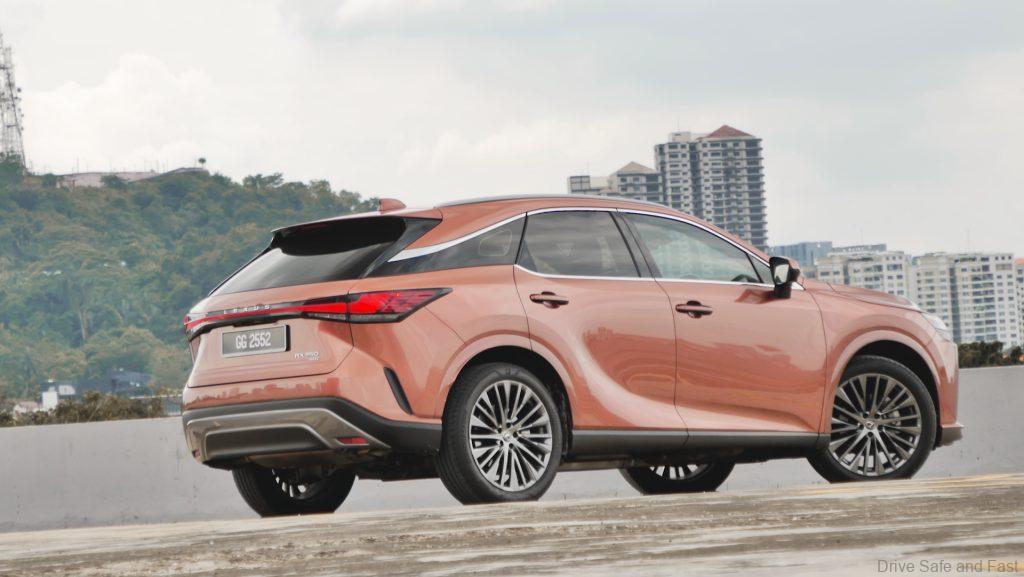
Most motoring enthusiasts are aware of just how prevalent the RX is in Malaysia. According to Data.gov.my, there are cumulatively more Lexus RX SUVs registered in Malaysia than BMW X5, Mercedes-Benz GLE, and Volvo XC90s which is strange considering the European brands are all locally-assembled and the Lexus isn’t! To be fair, most of these registered vehicles are parallel imported, meaning they’re often reconditioned vehicles from Japan. Mechanically, the RX has always been relatively uncomplicated and robust, with essentially more refined Toyota running gear and suspension. What’s more, the RX typically targets the middle-class family-oriented buyer and so there’s very little chance of finding a reconditioned unit that has been driven hard, modified or neglected. If you’re a value-oriented buyer looking for maximum luxury, comfort and utility, the Lexus RX is the logical pinnacle.
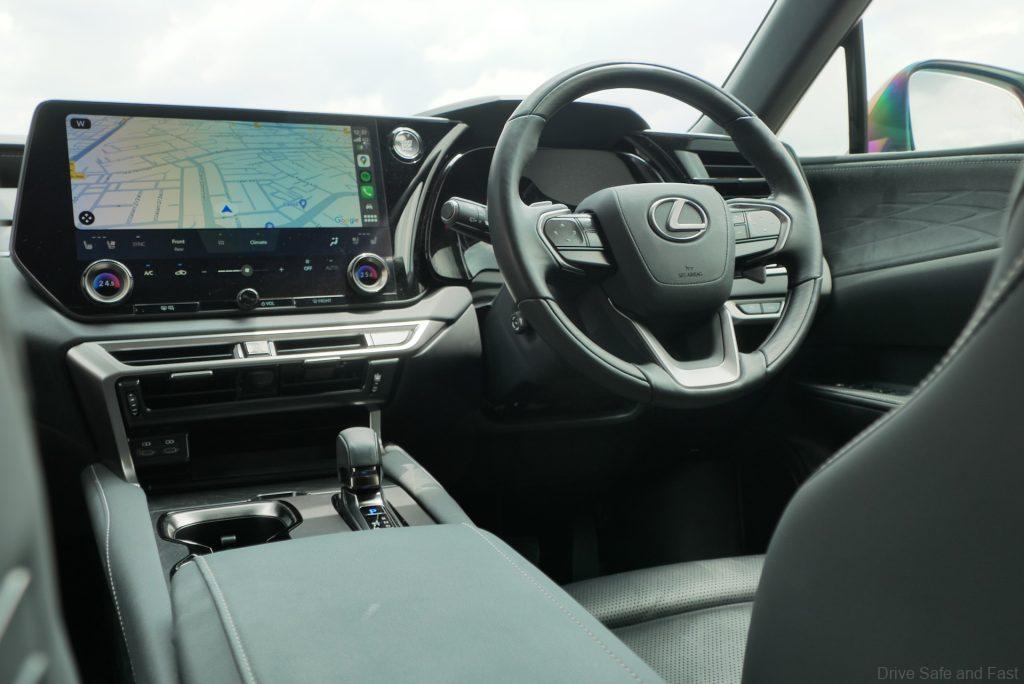
But what about this 5th generation Lexus RX? How has it been improved and how does it compare against the previous model? Well, that’s what I hope to answer for you in this review.
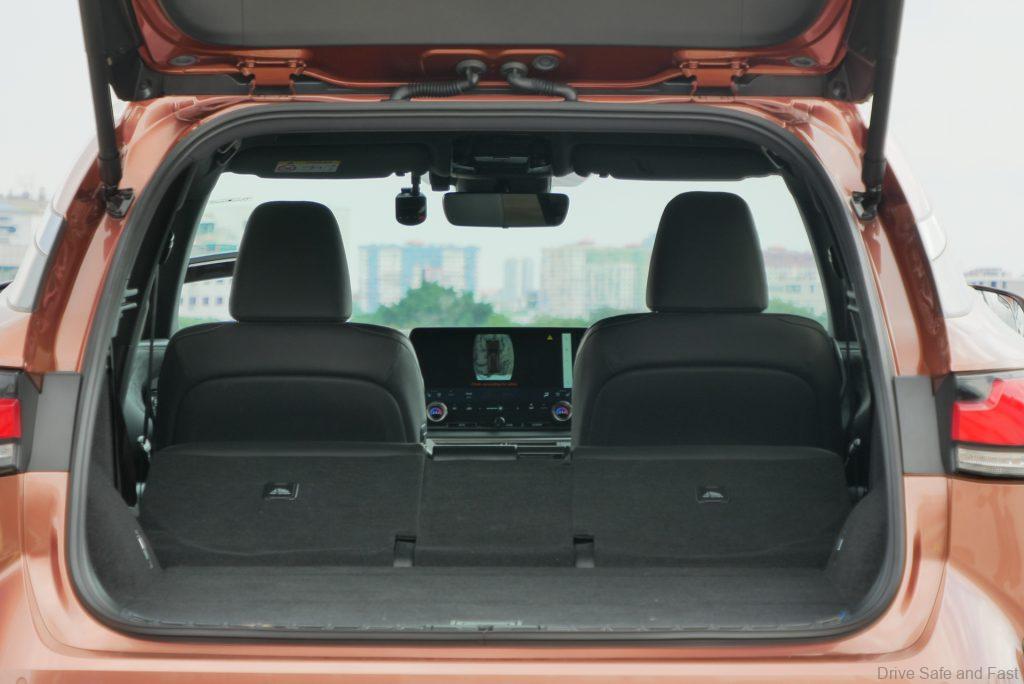
The 5th generation Lexus RX was introduced right after the smaller NX model as part of the brand’s new push into unfamiliar territory. This was the beginning of a more dynamic, high-tech and self-assured Lexus to help stave off the reputation that the brand was simply producing upmarket Toyotas. The result is quite spectacular. Let’s start with the way it drives.
Lexus RX 350 Driving Character: Relaxed & Capable
How does one make a large, luxurious, comfortable family-friendly SUV fun-to-drive without imitating what European rivals have been doing? Well, you work on the fundamentals. The engine is a transversely-mounted, high-powered 2.4L turbocharged 4-cylinder with direct and port injection. It’s quite a large turbo and it’s not quite as responsive at lower revs which makes the new Lexus RX just a little bit less effortless off the line versus the naturally-aspirated 3.5L V6 in the old model. However, it strikes a very good balance and manages to outshine both the 2.0L turbo and the 3.5L N/A V6 offered in the previous generation once you get on the highway.
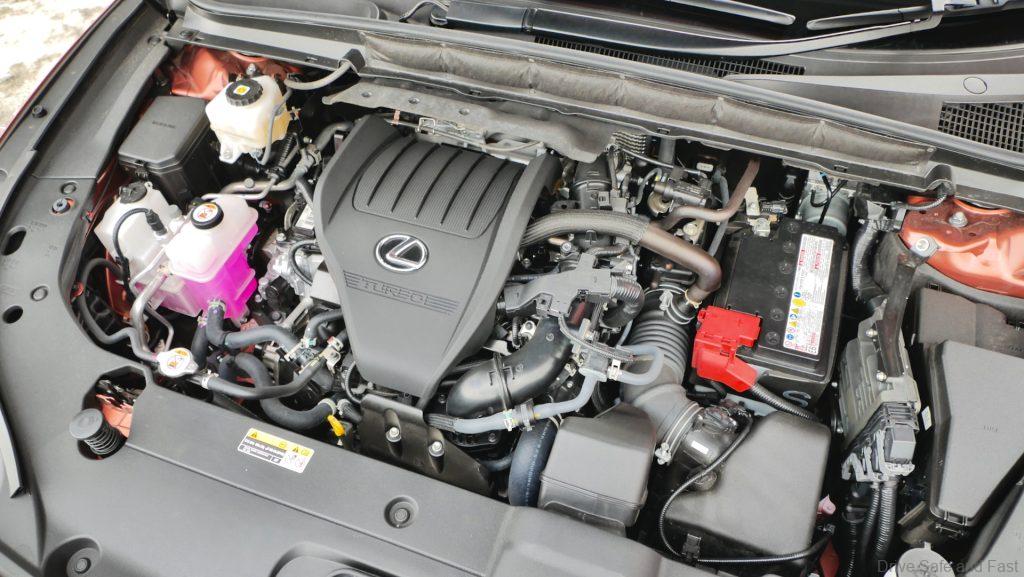
Fundamentally, this is still a luxo-barge, and a super comfortable one at that. The ride is supple but the chassis is still communicative enough for the driver to pick up on road surface information. Handling-wise, we see the largest leap forward in Lexus history. This 5th generation RX is a quantum leap forward in that department and what we have is a 2-tonne SUV with strong chassis fundamentals. It’s not the last word on sporty performance, but it’s certainly the most ‘natural’ feeling car in its class short of entering Porsche territory. Nothing about the RX feels electronically aided even though plenty of tech plays a role in this vehicle’s driving character.
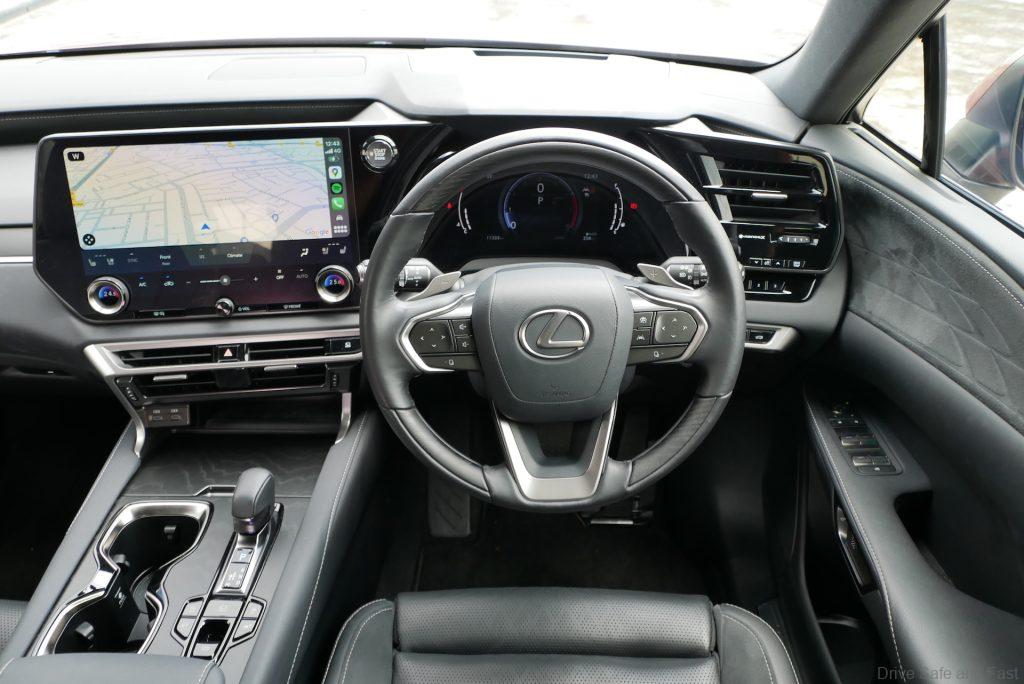
Back to the powertrain, what we have here is not a fast-revving or hybridised set-up but a nice large capacity engine with an endless sea of torque to offer. Out on the open road, the Lexus RX 350 really comes into its own element. It feels as if you can ask for more speed at any given speed and the engine and gearbox will find some to spare. It can offer relentless pace if that’s what’s asked of it. Of course, without electrification there’s no ‘blink-and-you’ll-miss-it’ acceleration, but we just loved the organic delivery of power. Hats off to Lexus engineers for proving their mastery of the internal combustion engine. The 8-speed automatic is pretty quick shifting and it does a lot of that, given the engine doesn’t have a very high redline. What surprised us the most was the transformation of the drive character when in Sport mode. The adaptive dampers really did stiffen up dramatically, while the steering felt a little more resistant to inputs at high speed and we got more responsiveness out of the go pedal.
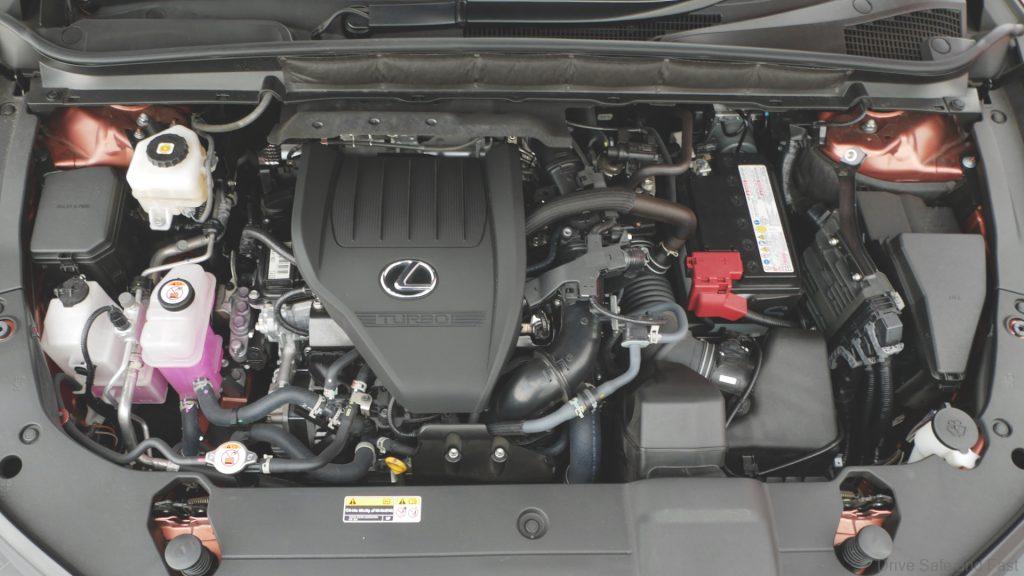
What about efficiency? Essentially, that’s up to you. The T24A engine is one of the most thermally-efficient petrol motors in production, so if you’re light on the throttle, you will get acceptable results given the car’s weight class. Just don’t expect hybrid-levels of efficiency here. All-in-all, the RX 350 is a masterclass in pure petrol power while the rest of the pack have moved on to hybrid-only options. The Lexus Driving Signature is an enjoyable one and you won’t feel like you’re giving up comfort for dynamism. If there’s one thing we could see improved, it’s the rear suspension damping. There are instances where the rear axle felt like it reacted too harshly to speed bumps, so you really do have to bring the car to a crawl over speed bumps when you’re carrying a full load.
Design: Sculptural, Iterative, Detailed
This is perhaps the biggest selling point of the new RX, so our words will not matter too much. In any case, here’s what we have to say about the way the car looks. We were happy to receive a test unit in Sonic Copper, as this colour is utterly unique to Lexus and brings out the exquisite bodywork. The brief to the designers for this generation was to deconstruct the ‘Spindle Grille’ and that’s what we see here. The ‘X’-shape of the grille is now a silhouette with the top half being completely body coloured, closed-off and merged with the hood. This gives the new RX a shark nose look and there are cutouts that blend into the closed off section gradually in a very organic way.
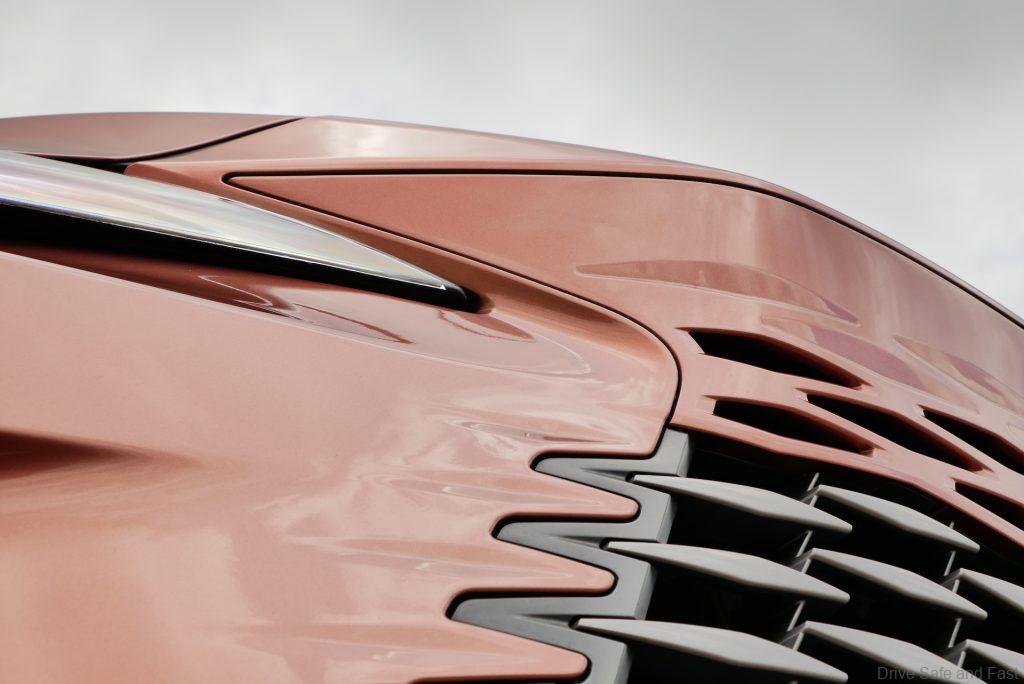
The headlights are very high-tech with a slim multi-LED projector layout and Adaptive High-beam System with BladeScan. L-shaped DRLs sit right below the sequential turn signal light strip.
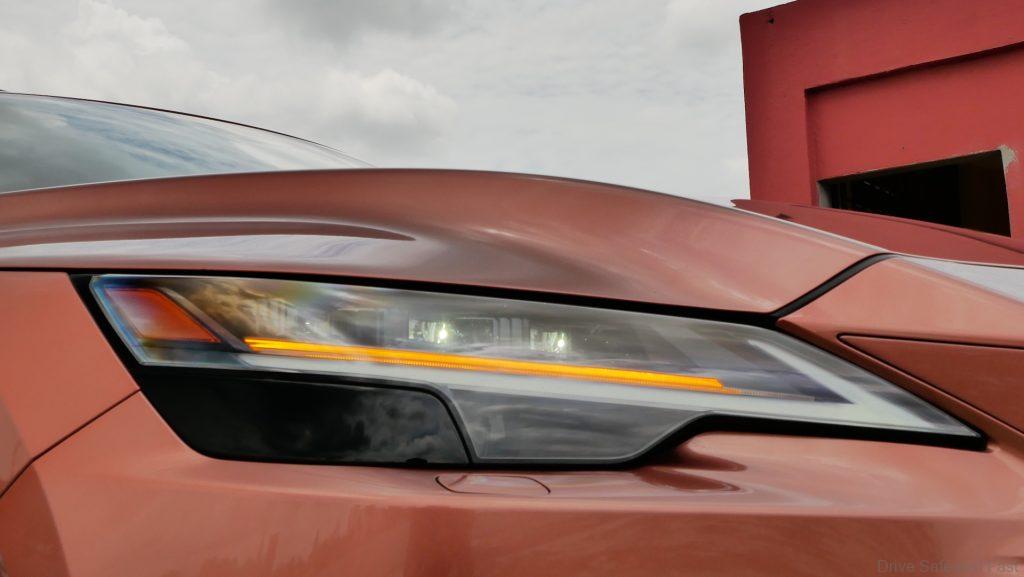
At the bottom section of the bumper, we see the foglamp housing, which also integrates a turning lamp and an air breather. Note the dimples in the shape of the grille cutouts that help to blend the grille section with the bodywork.
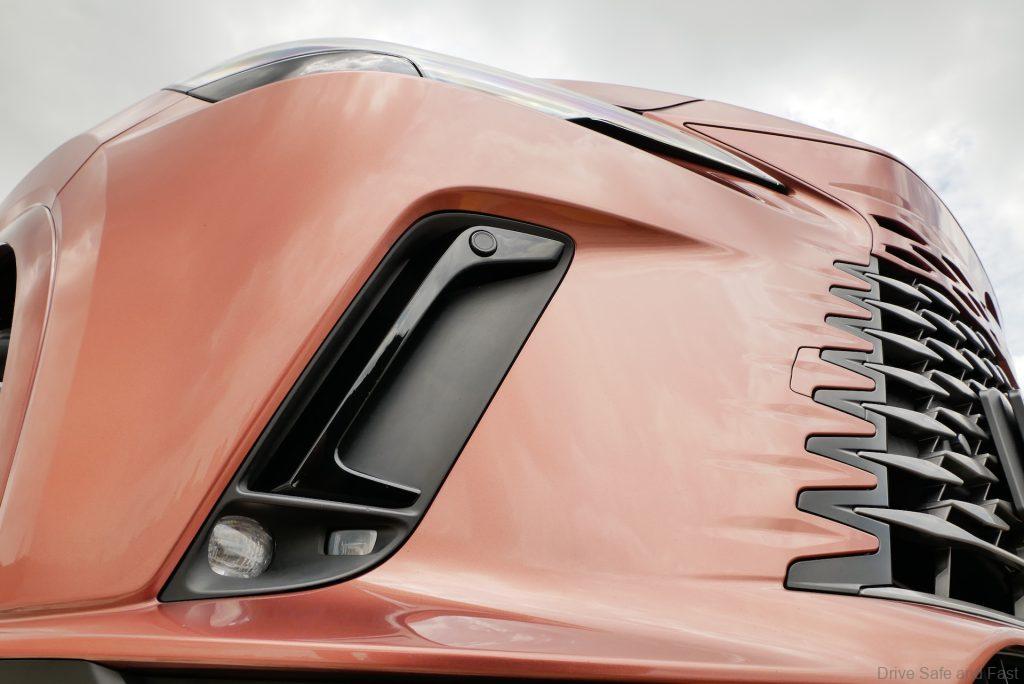
Overall, the designers toned down the level of aggression in the headlamps by making them more horizontal, deleted almost all chrome from the face of the car (save a little on the wing mirrors) and blended the grille more organically to the rest of the body. It’s also worth noting that the radar is nicely hidden in a ‘normal’ sized Lexus logo, which is a far more elegant solution than what’s provided by rival European carmakers.
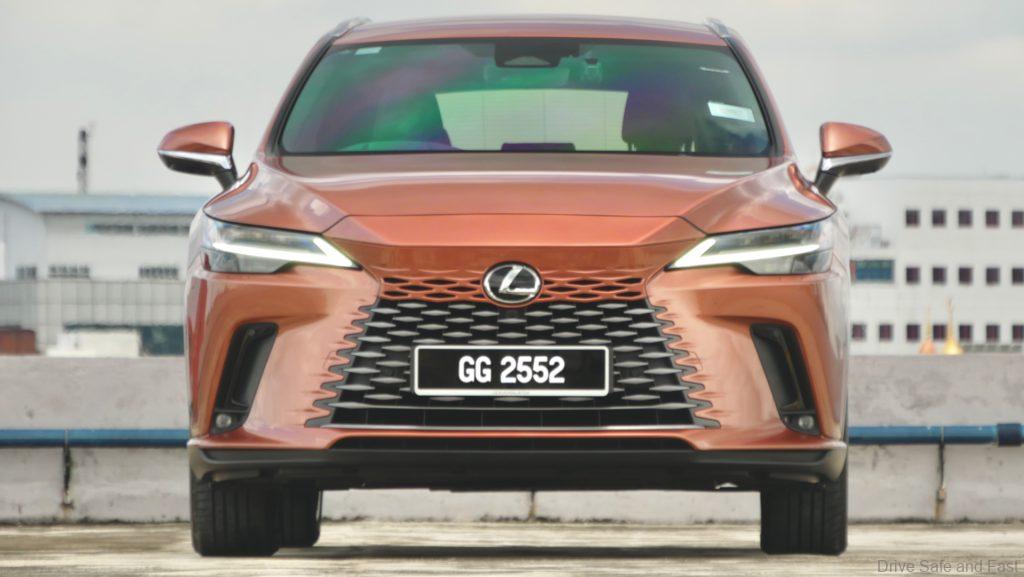
A key visual identifier of the Lexus RX from the side is the D-pillar trim. This blends the rear glass with the side glass and it’s something they’ve been doing for a few generations now. Zoomed in, it doesn’t look quite so seamless, but when you look at the vehicle’s silhouette as a whole, the floating roof effect is very pronounced.
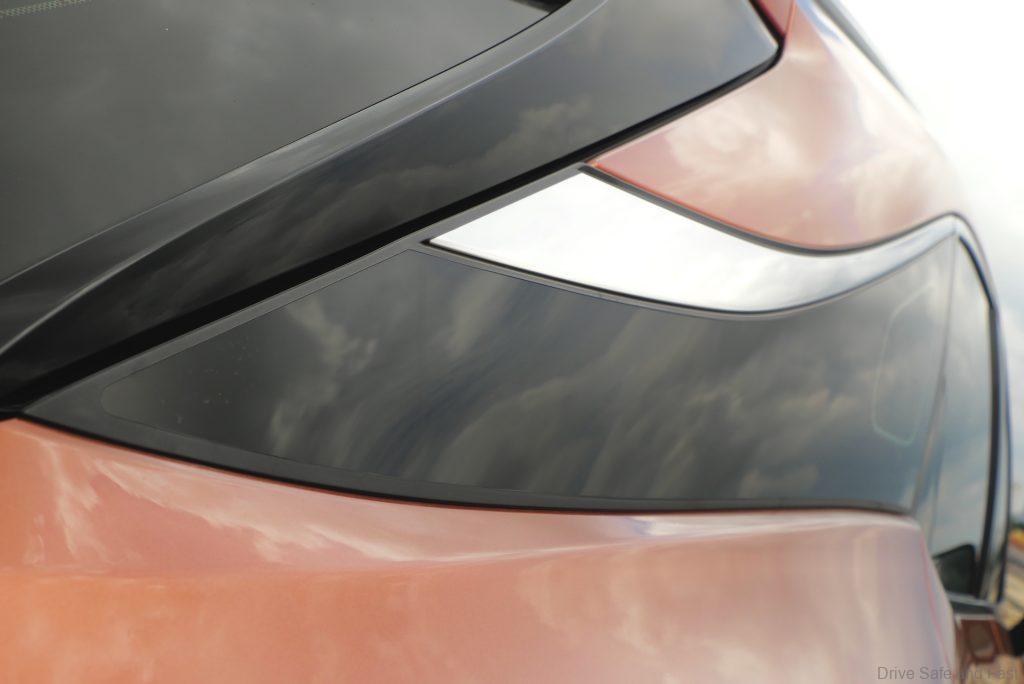
Chrome trim is sparse on the RX and we’re not sure if it was necessary at all on this model as it creates a pretty harsh barrier between surfaces that would have otherwise sit quite flush.
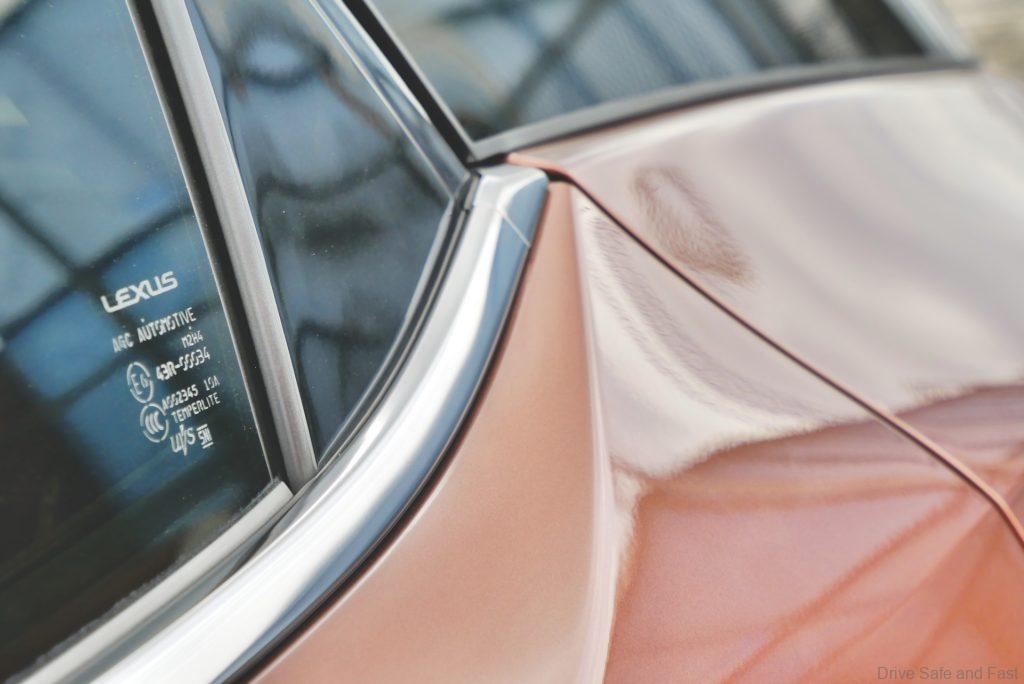
On the side mirror the effect is quite easy to see, as the chrome piece feels like it’s not quite part of the rest of the unit. This is a subjective observation, as the chrome trim could also be said to add a little bit of a luxurious and opulent look which befits a car of this status.
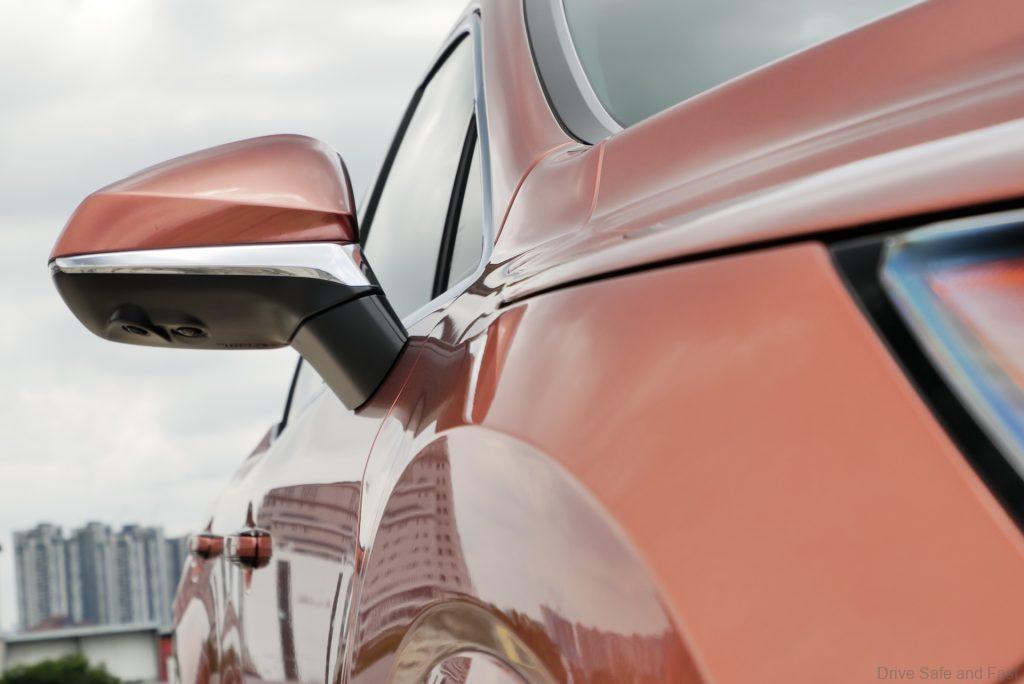
The Lexus RX 350 comes with 21″ alloy wheels wrapped in Bridgestone Alenza tyres. These rims have an intricate multi-spoke look and and the satin finish is quite elegant. Some may bemoan the lack of a 2-tone look but the end result works quite well with the rest of the car’s design.
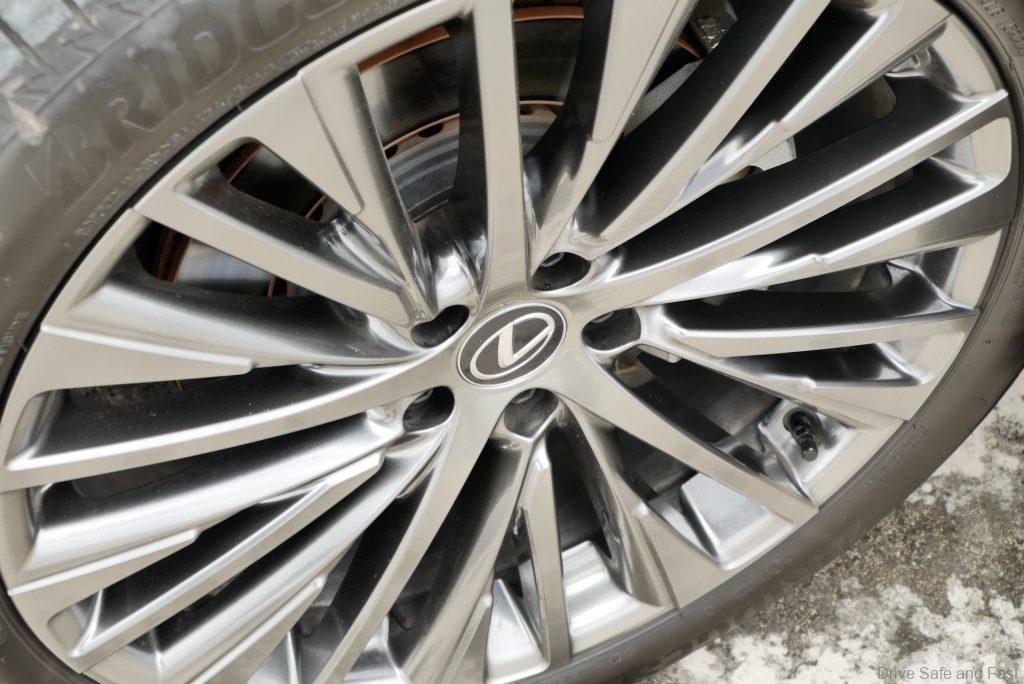
The final thing to note about the side – the new door handles. These are now fixed with gloss black plastic cladding. What’s more, they feature the new e-latch system, which puts a small tactile button inside the handle that electronically unlatches the door, freeing the handle to be just a door handle instead of doubling as a lever. It’s an unconventional approach but one that Lexus has decided to design conventionally.
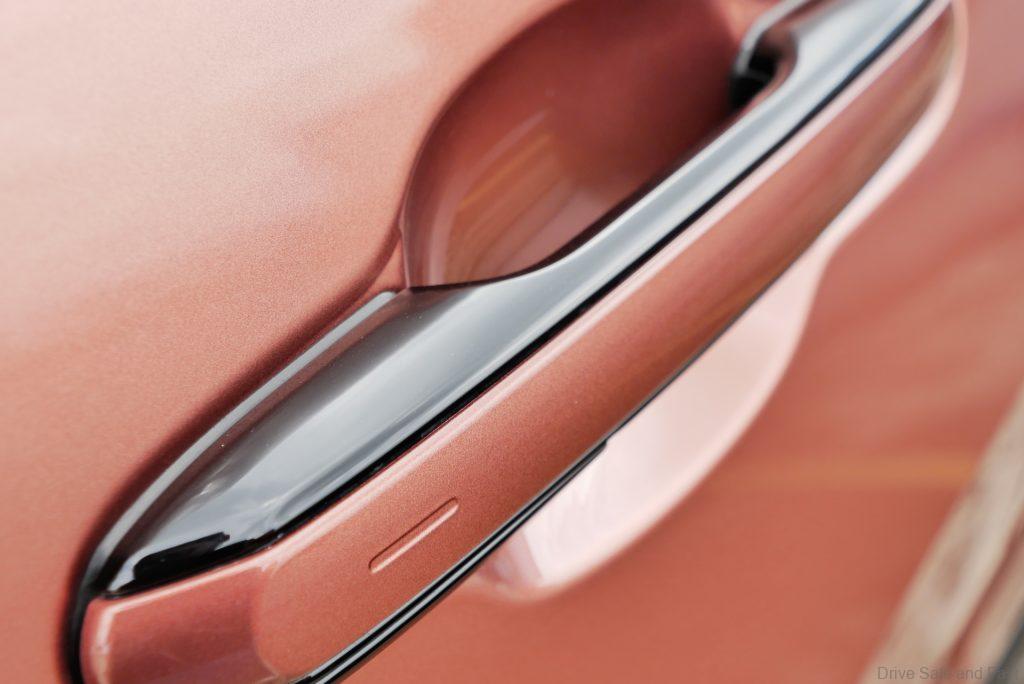
When you look at the side profile of the RX 350, that’s where the details of the design sort of disappear and what you’re left with is a very elegant and upmarket looking moving sculpture. There are very dramatic surfaces here which go way beyond what we’ve seen on most conventional Lexus models of yore.
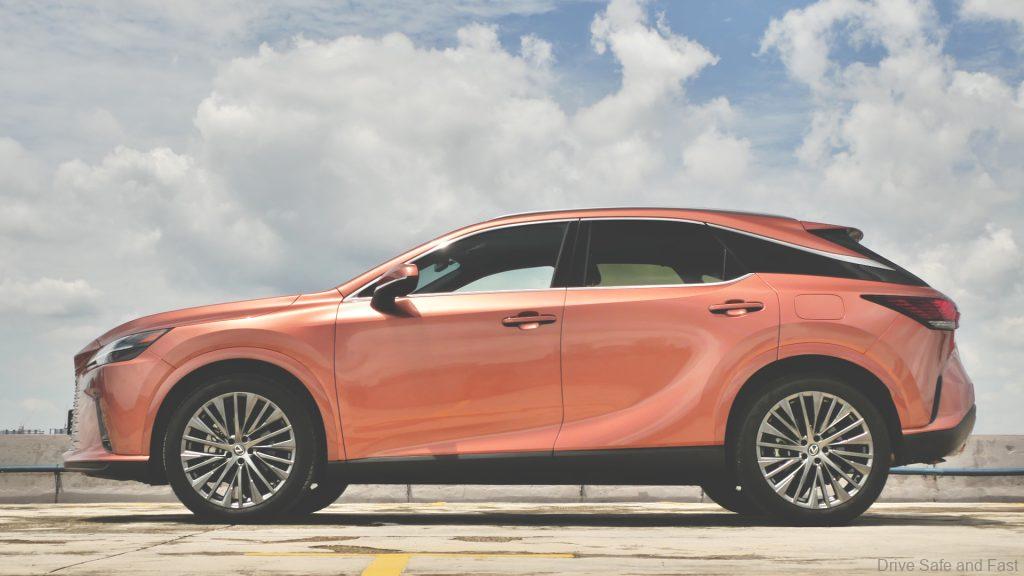
Finally, around back, we see the most confident and assertive angle of the vehicle. Here, the taillights are connected ‘unibrow’ style but a little bit of unique character is retained towards the end of the taillight strip where we find a hint of the ‘L’ shaped motif from the daytime running light repeated and blended into the primary LED piece.
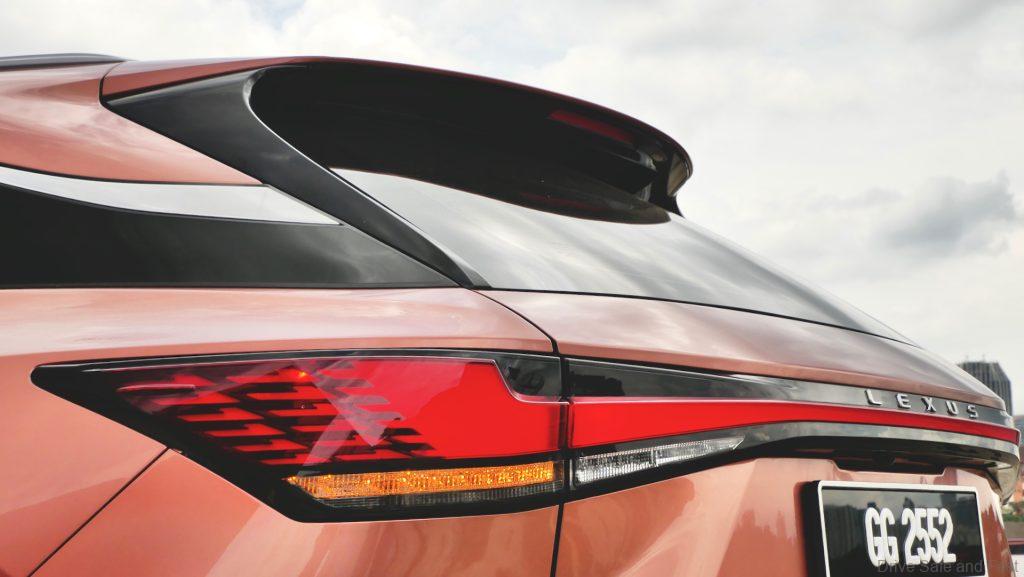
The whole unit is mounted on a stretch of glossy black plastic that features the ‘LEXUS’ name mark fully spelled out for the first time on the rear of an RX. This is a trait the company has adopted for all models starting with the new NX.
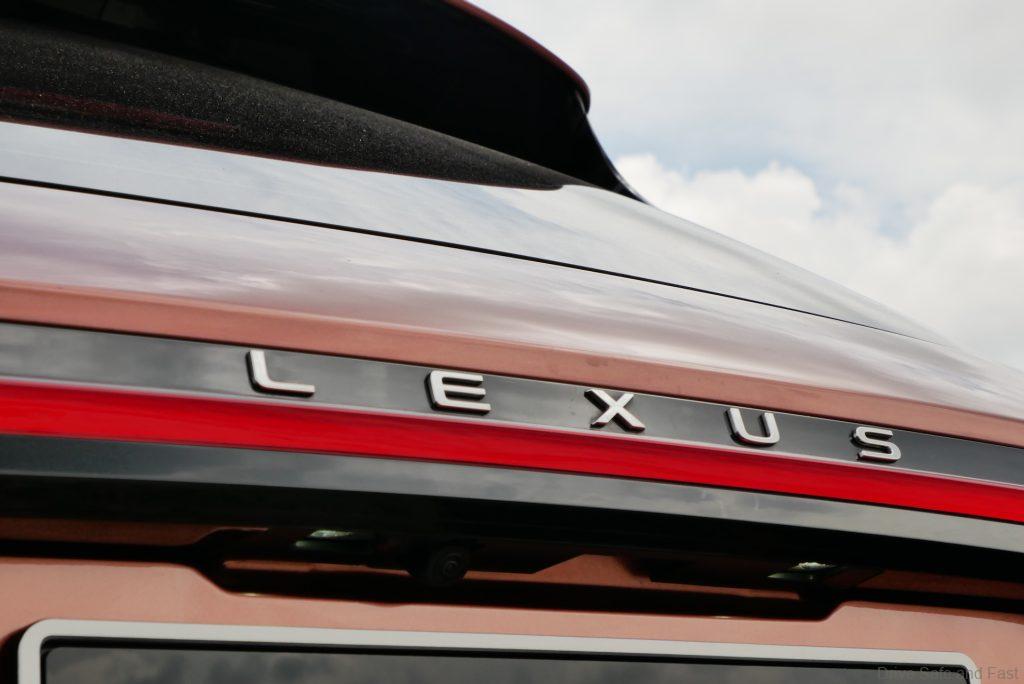
A steeply raked rear glass bordered by a mild spoiler complete the look of the top half of the vehicle. The lower half features dramatic curves creasing their way from the taillight to the rear air breathers. Below the dual tone lower bumper area are twin hidden exhaust tips with little reflectors integrated just above them. It’s a very clean look overall and one that manages to look both timeless and contemporary.
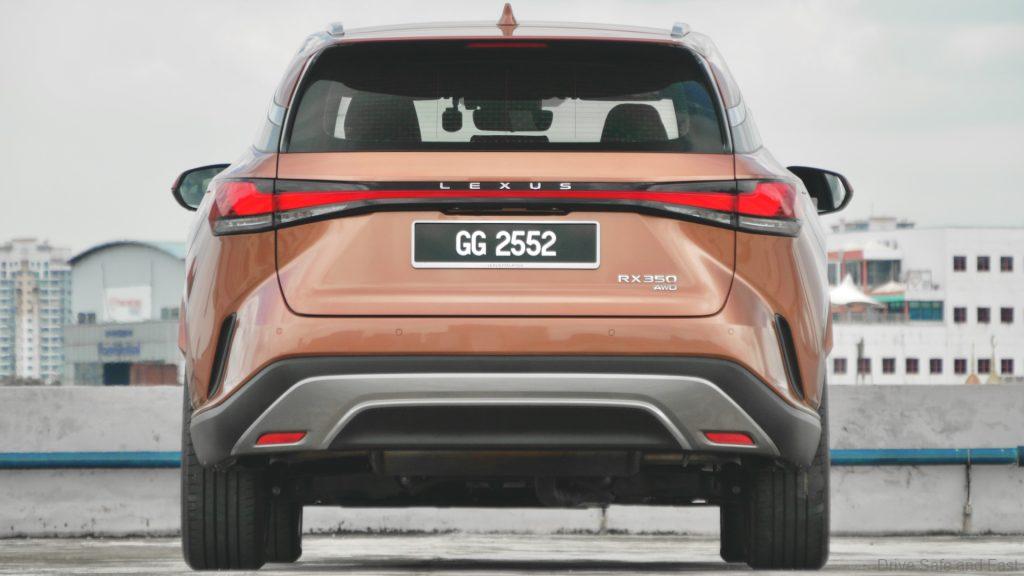
It’s only when you put this design next to some of the previous Lexus RX models where you can start to appreciate just how deliberate the evolution of this vehicle has been. Of course it’s a slightly larger car, but the biggest change in proportions comes in the form of a longer wheelbase. It’s all positive in terms of the design direction in our books. The new Lexus RX looks better from all angles without making the older car look outdated or undesirable.
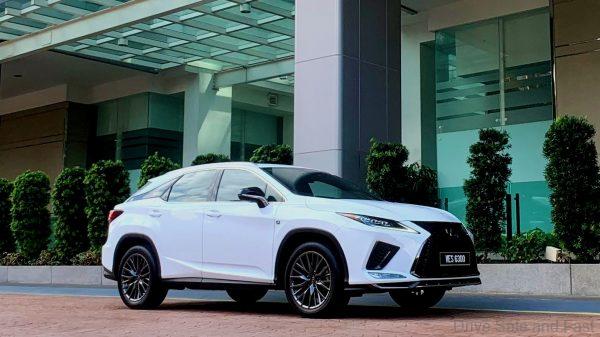
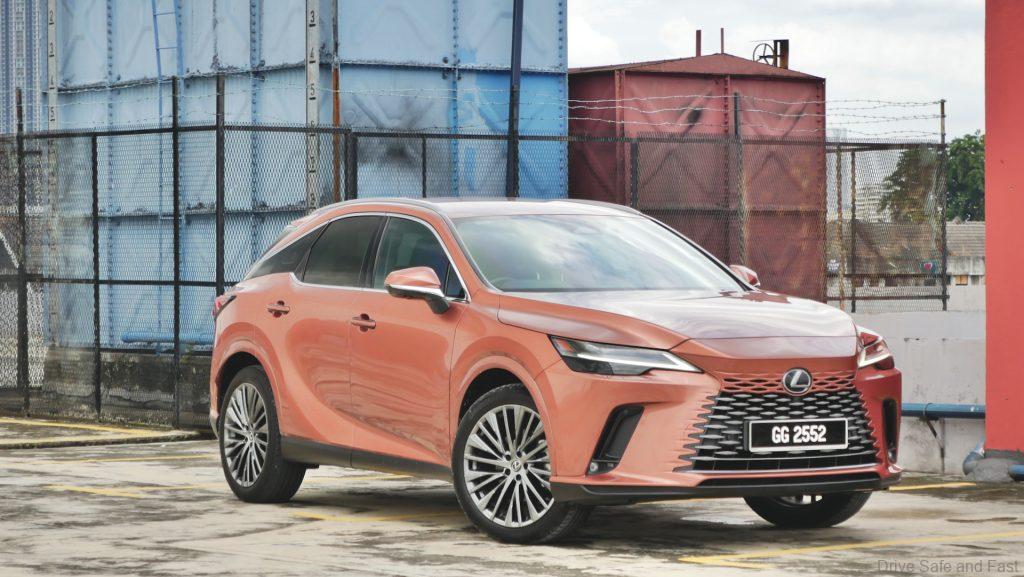
Inside, what we find is a mix of practical compromises, high quality materials and attention to detail. There’s plenty of positive to mention about this cabin. Lexus has clearly given up on their Remote Touch system in favour for a full touchscreen. You get wired Android Auto and wireless Apple CarPlay with this system though the 12-speaker sound system is unbranded in our Malaysian spec. They sound solid though, but don’t expect best-in-class audio or customization.
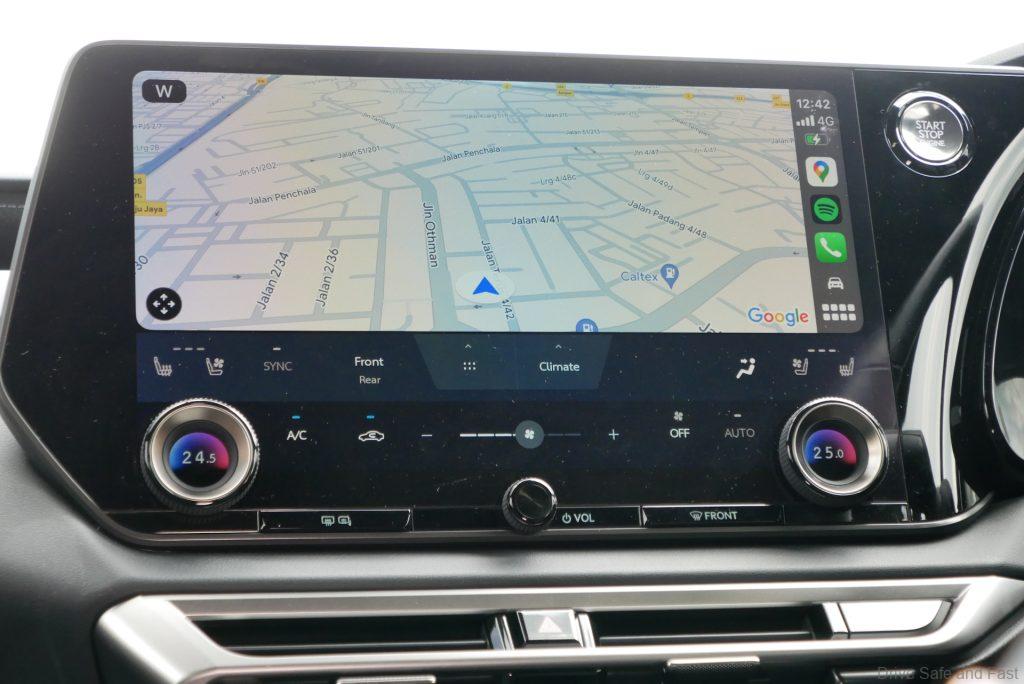
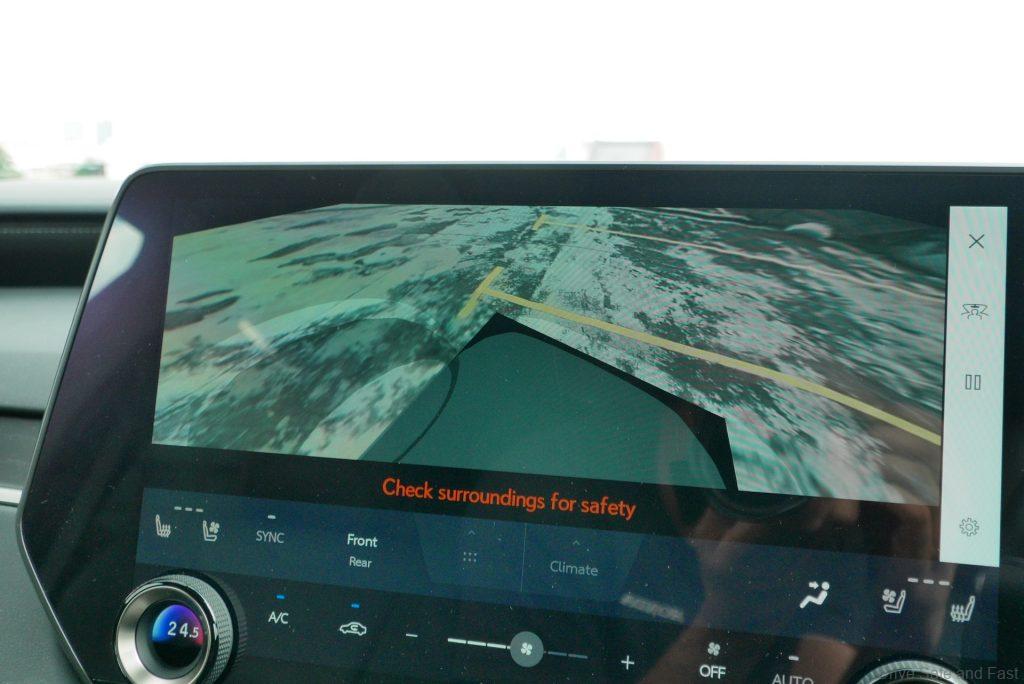
This massive 14″ system actually feels a lot closer to a 12.3″ unit as some real estate has been set aside specifically for climate controls. These digital buttons are permanently displayed. We love this approach.
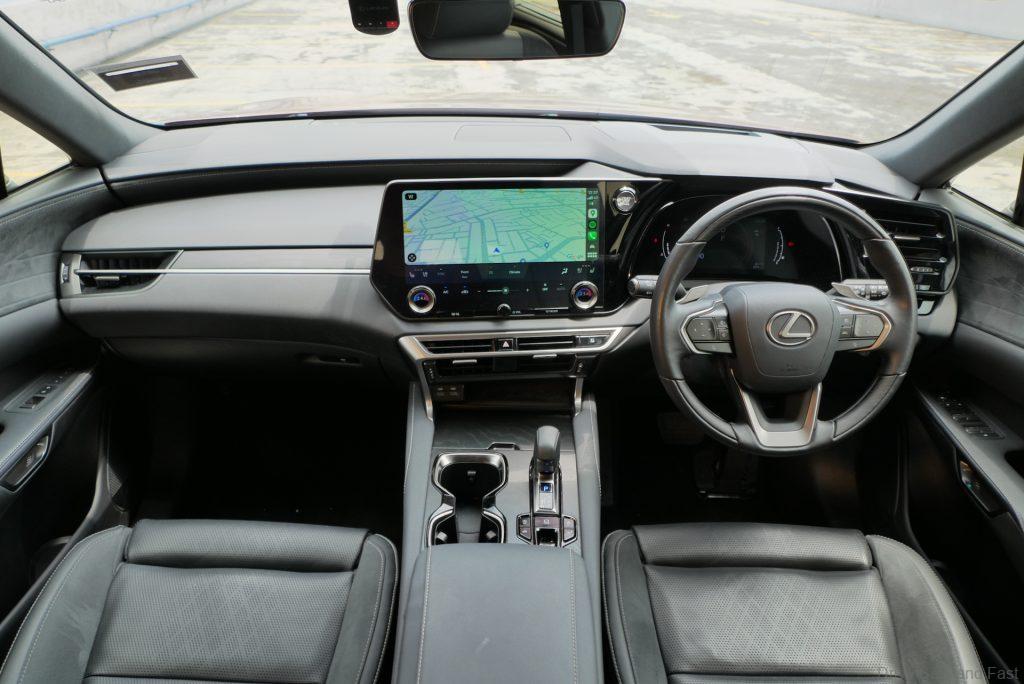
Sadly, the high quality volume control knob from the previous generation has been replaced by a smaller, cheaper feeling knob but Lexus has instead given us a nice high tech compromise in the temperature control knobs. These have the temperature displayed in the middle in full colour and have a pretty nice tactility to them. They’re not as dramatic as the ones you find in modern Land Rovers but it’s still very cool.
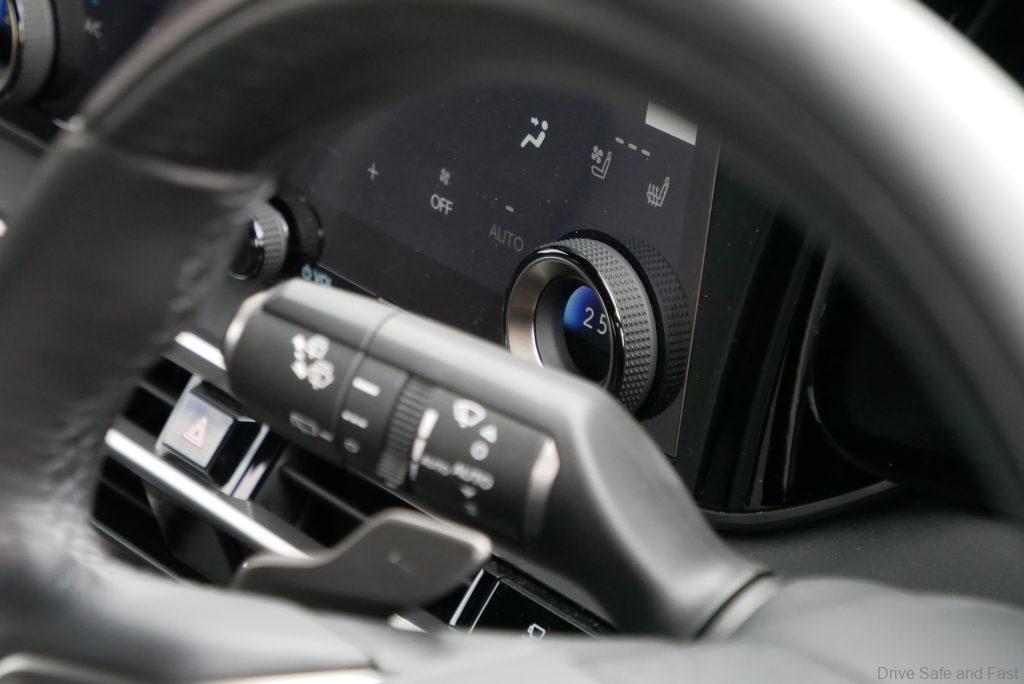
Our only complaint about the new cabin experience is the Drive Mode selector and gear selector. First, the Drive Mode selector doesn’t have a physical switch in the cabin even though Lexus could have easily accommodate one by halving the size of the brake hold button. Instead, you have to interupt your Apple Carplay projection just to go into Sport mode. For all the talk of Lexus’ Tazuna philosophy bringing physical buttons back wherever necessary, the designers seem to have missed this one out completely.
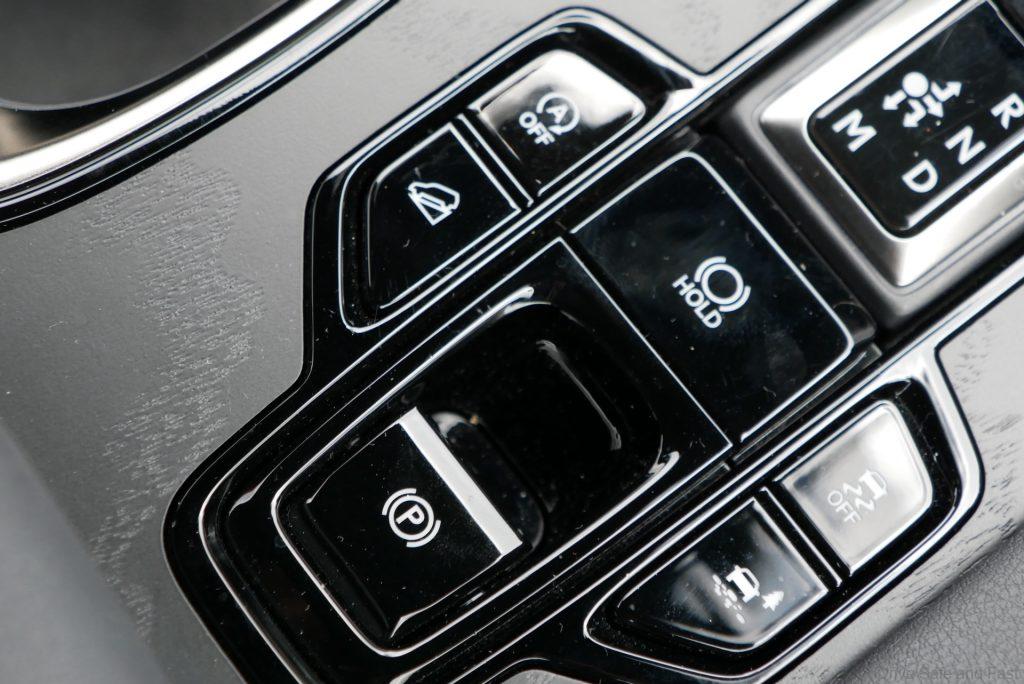
The gear selector itself is shift by wire and pretty dimunitive with a slight driver-oriented tilt to it. We think this was an okay design direction for the shifter but almost everyone who tried to drive our test unit had to stop and think about how this lever worked. Even I myself had one or two encounters where I thought I had pushed it all the way into reverse but had to double check as there’s no tactility at the engagement point. There’s also a little bit of an uncomfortable situation in going from ‘M’ back to ‘D’ while the car is in motion as this requires the gear selector to go through ‘N’ momentarily on its way to engage ‘D’. These are minor complains but ones that a conservative brand like Lexus usually doesn’t make, so they should be noted.
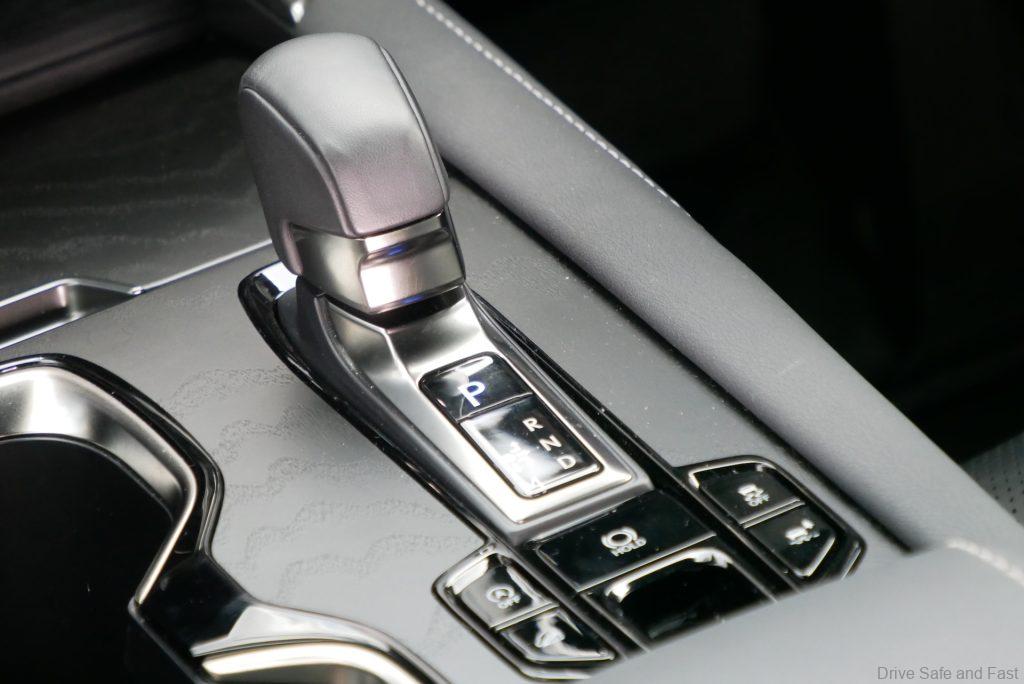
Back to the good stuff. The materials in here are really excellent. There’s faux suede with nice embossed patterns on the seats and door cards.
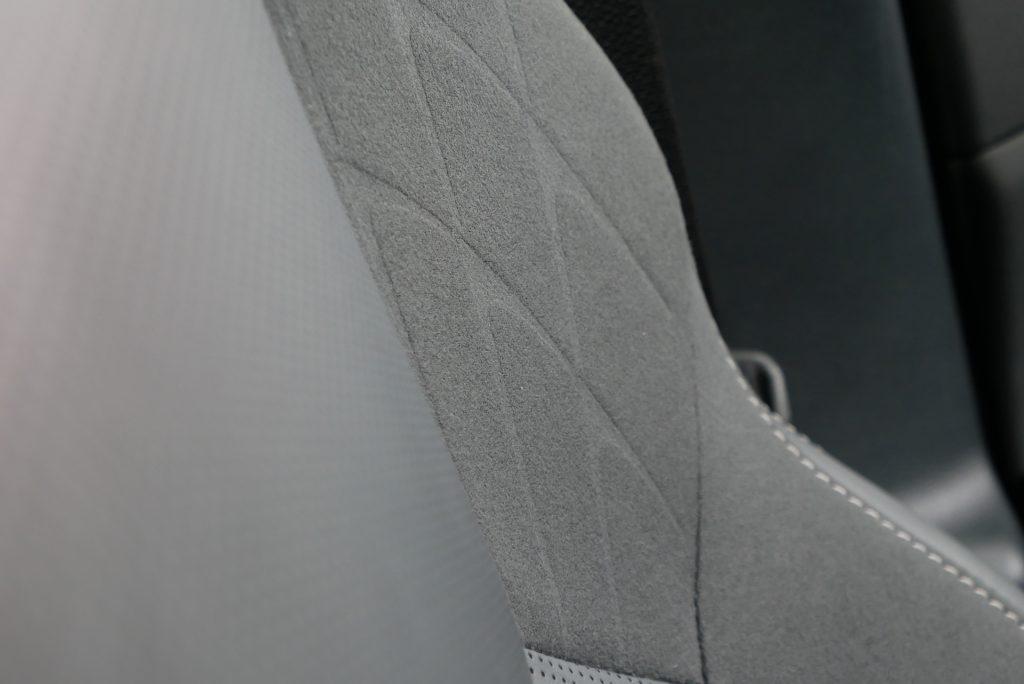
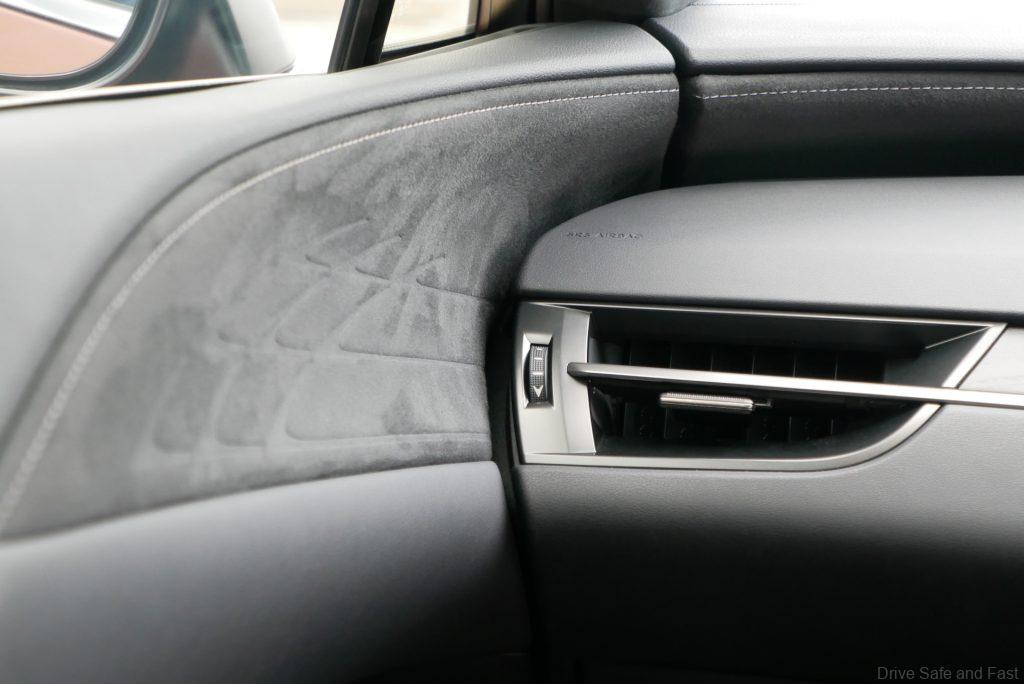
The wood trim on the steering and centre console have a nice, believable grain to them and a matte finish. The leather has a semi-aniline feel to it which we loved.
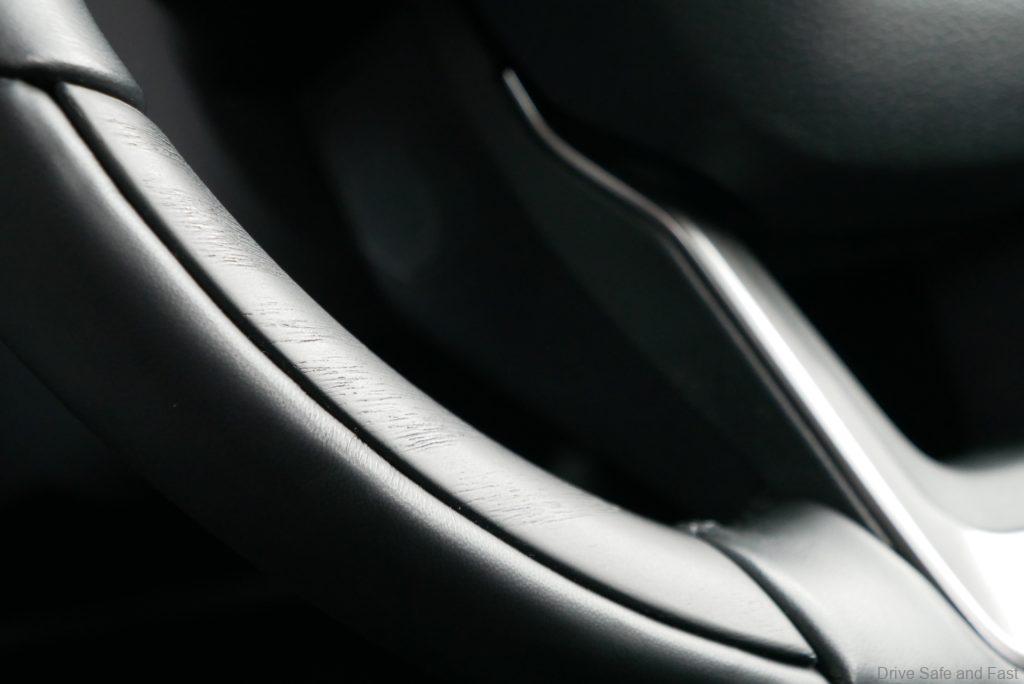
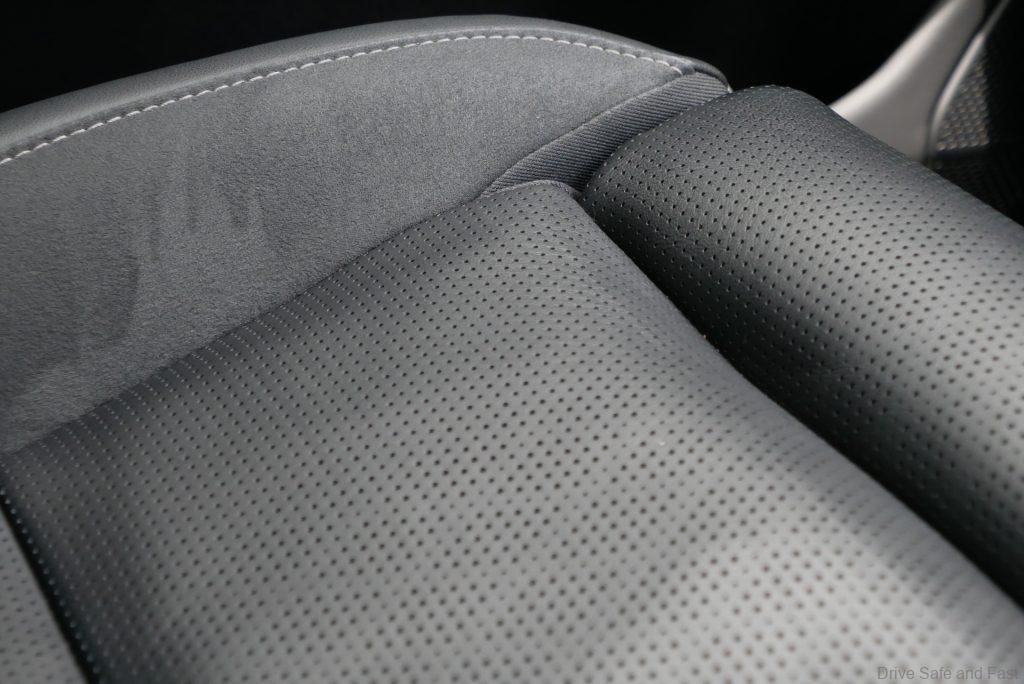
There are plenty of velvety surfaces but maybe a tad too much gloss-black dust-magnet surfaces too.
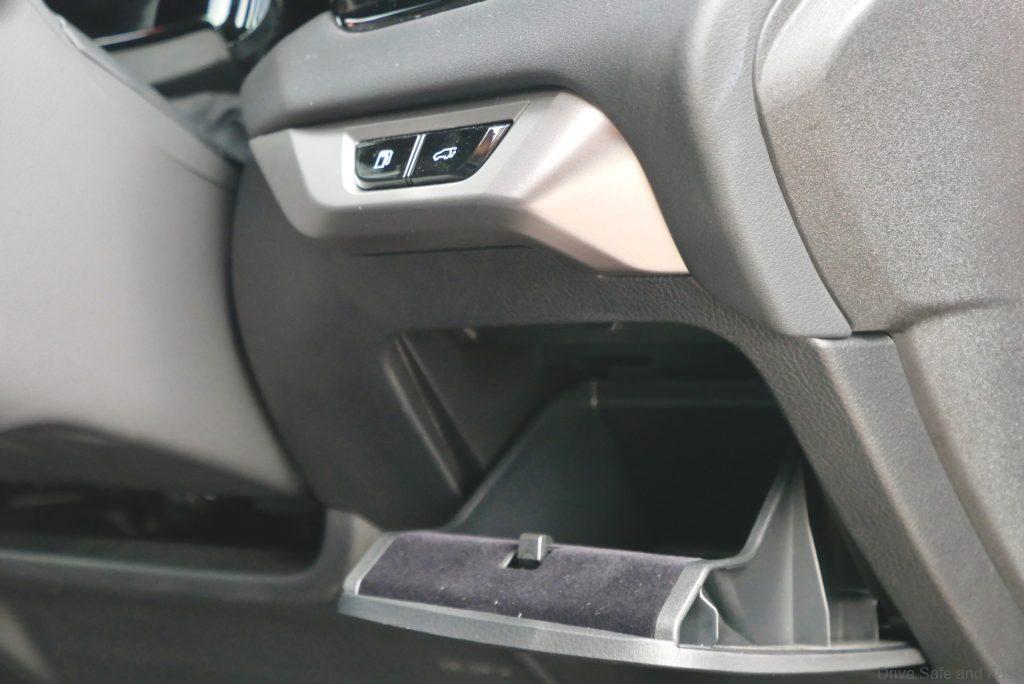
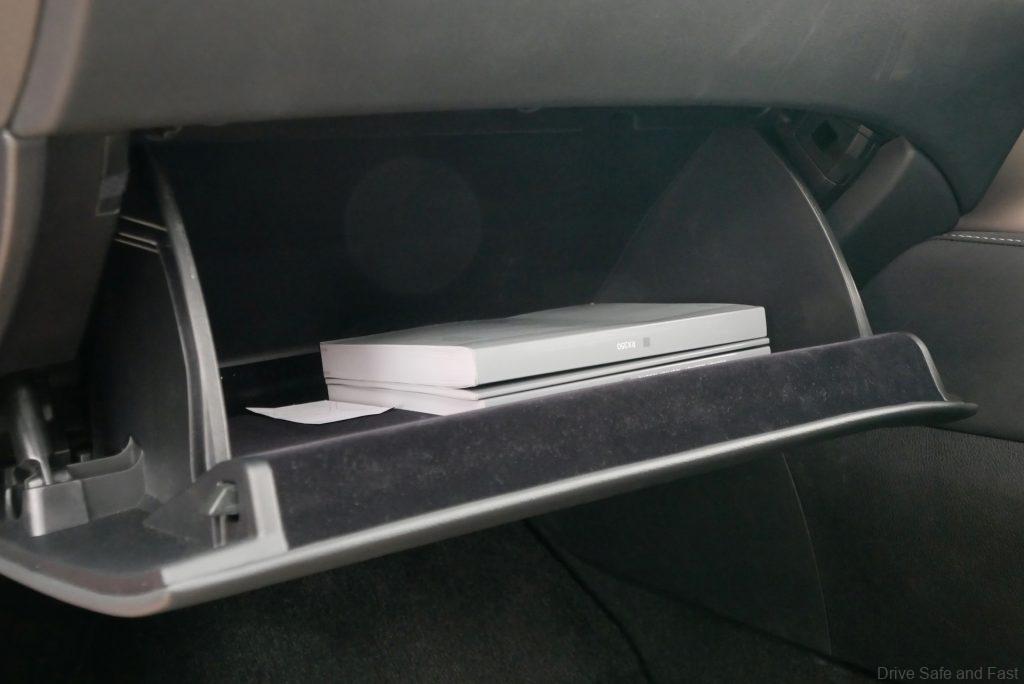
The front passenger has a uniquely designed air vent and access to 3 seat memory configurations along with door lock buttons but can flip the centre storage box open in their direction.
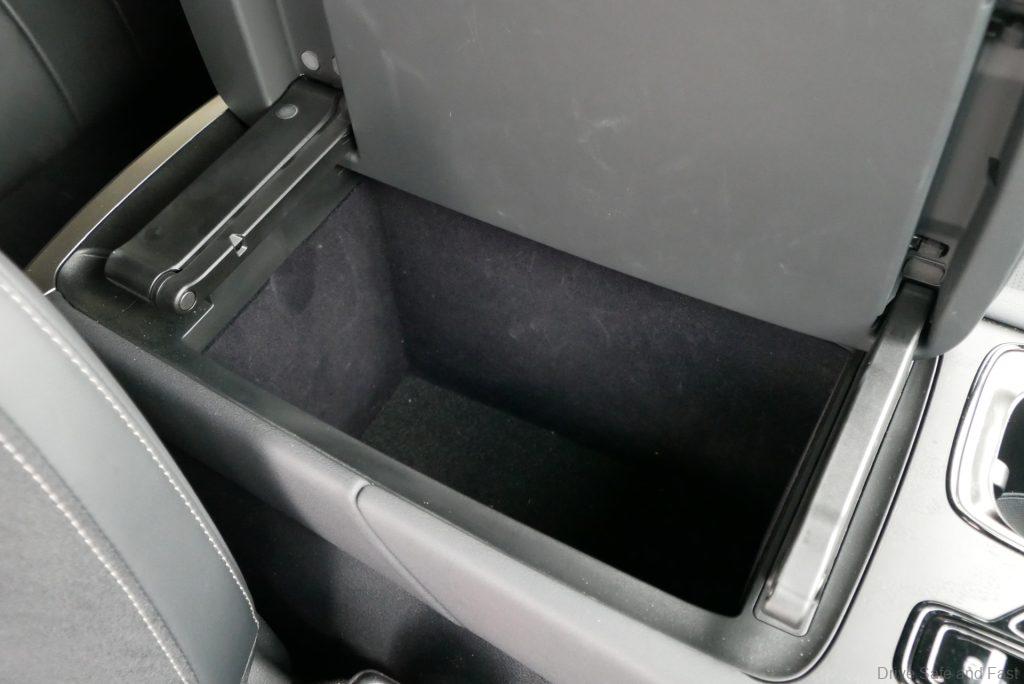
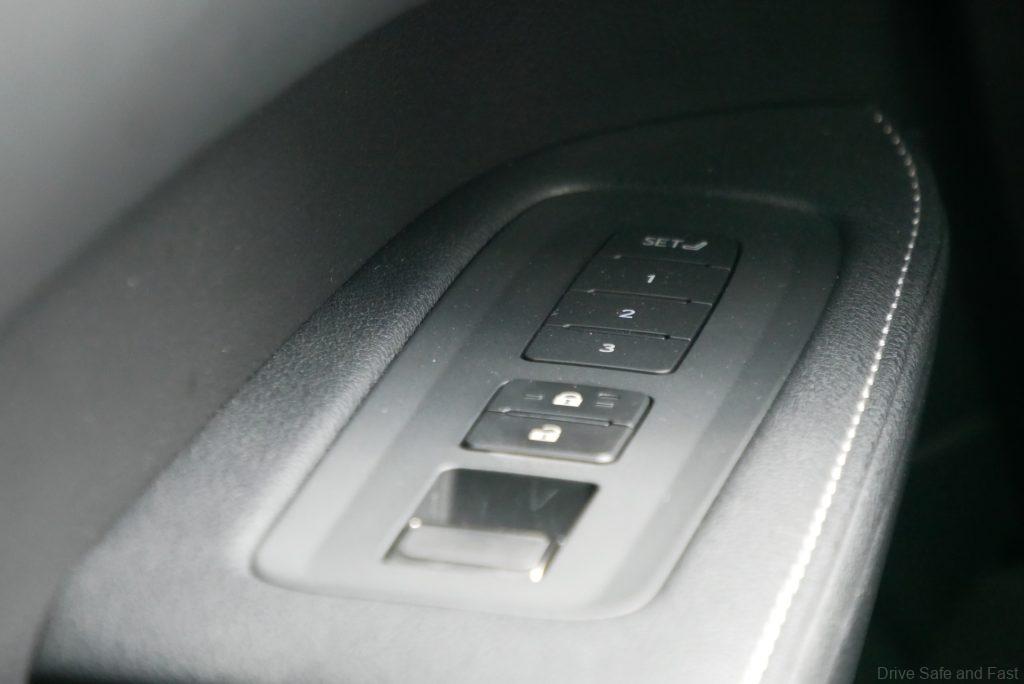
3 USB-C ports are available for charging in front plus a wireless charging pad for a single device and a single USB-A port for Android Auto.
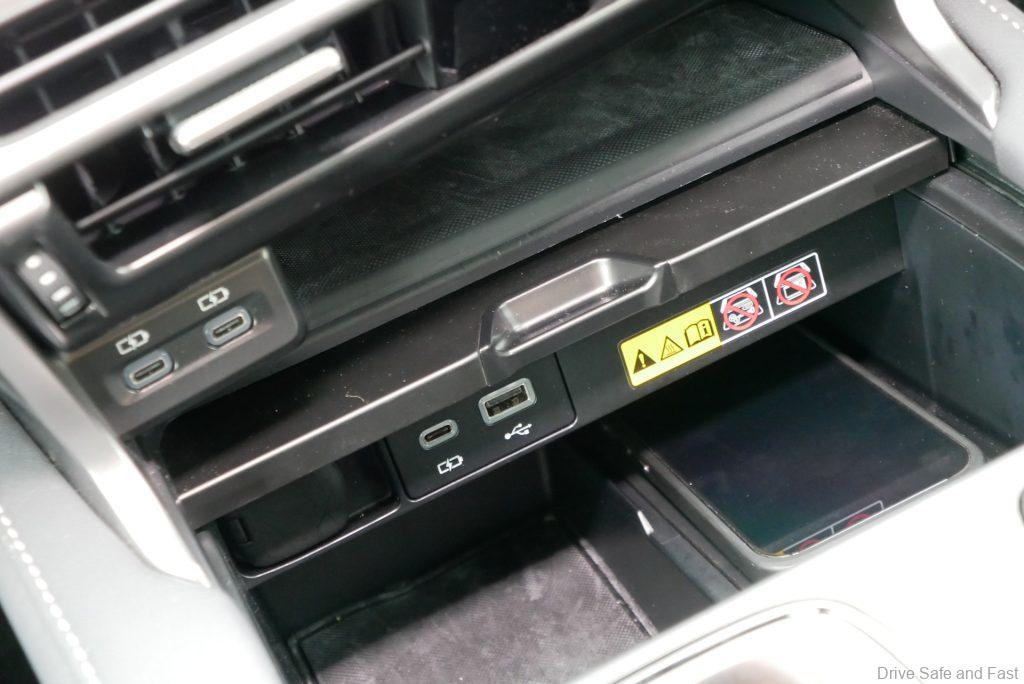
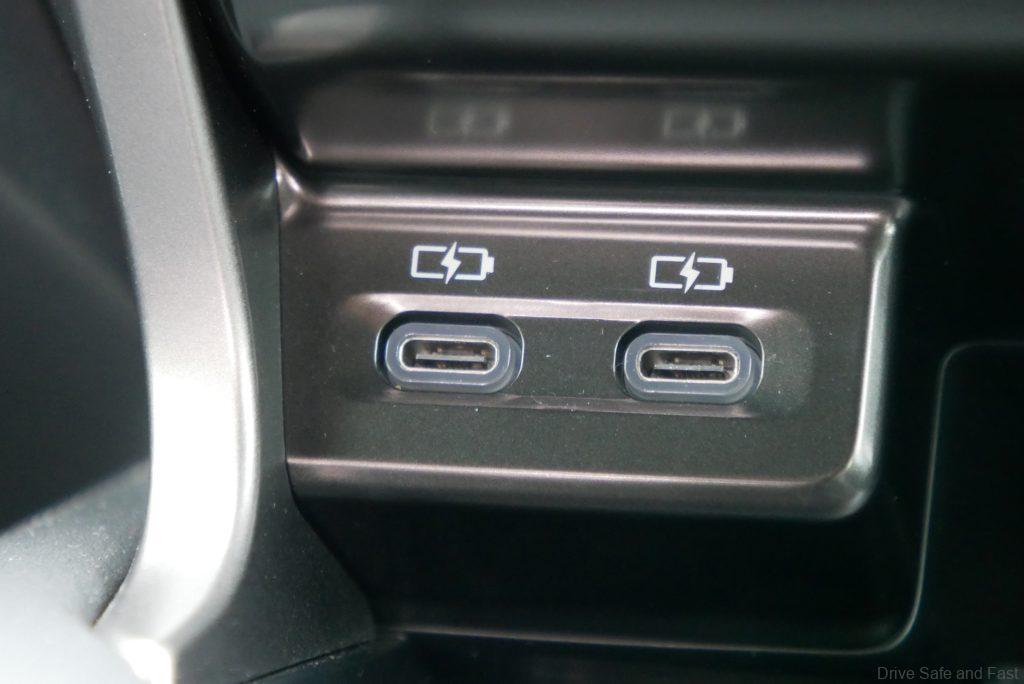
A strange item we found was the curved glass in front of the instrument cluster. It only looks curved when viewed from an angle, so the driver probably won’t notice that at all. It almost feels like a low-budget response to BMW’s curved display but the digital element here is completely flat behind that curved outer glass. No complaints though, as instrumentation is crisp and clear with fast animations.
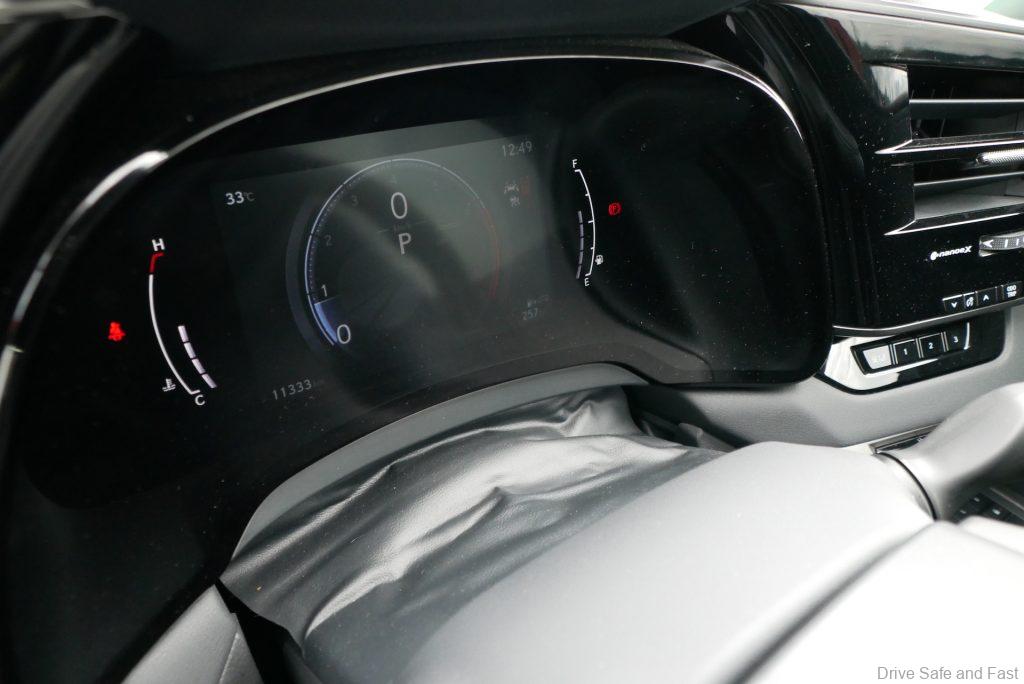
Around back, the Lexus RX still doesn’t feel as large as it looks but thigh support has improved in this generation. You get roll-up sunshades for both windows and the door cards are more sophisticated than ever.
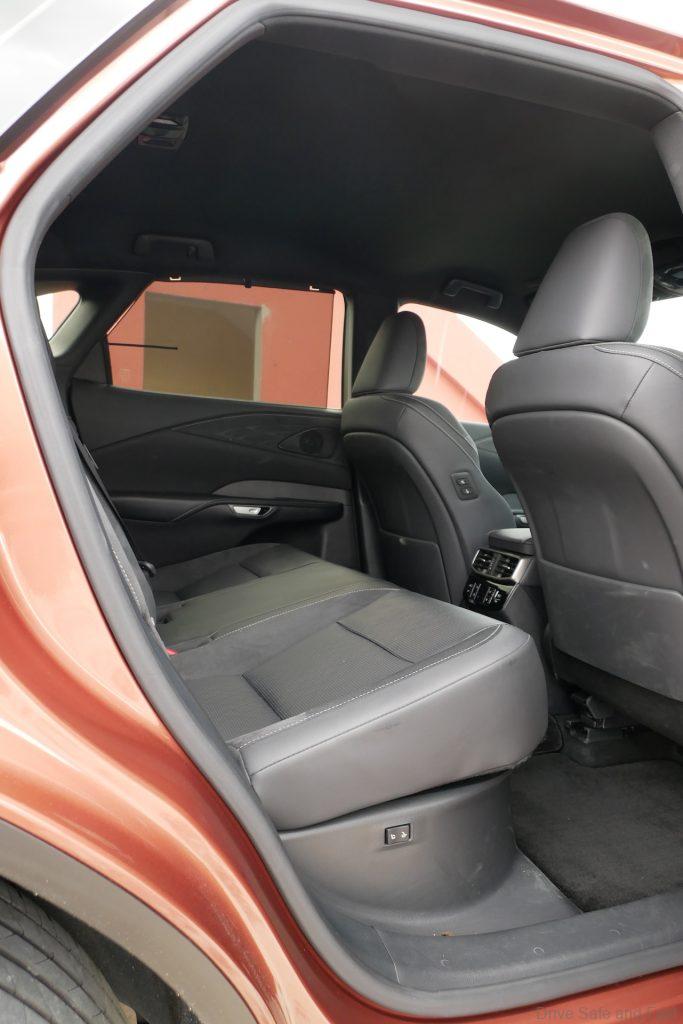
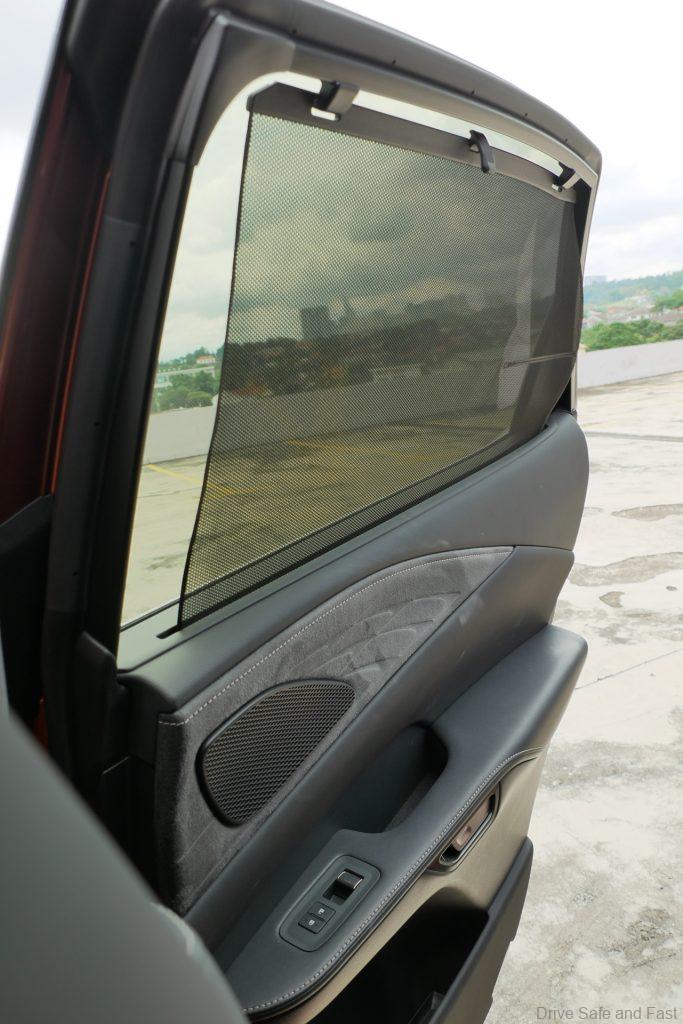
You’ll find each door has its own lock and unlock buttons, and a patterned Alcantara trim piece with a speaker grille. There’s also some faint ambient lighting and the e-latch is mounted pretty low. In our experience it was sometimes tough to communicate where this was and how it worked to new passengers at night. Once it was communicated, it worked ok. We think the e-latch is an interesting addition, but we prefer regular door handles for the increased degree of control one has when swinging the door open in a tight space. The e-latch presumes a sort of low-effort elbow-shove and it’s good for that.
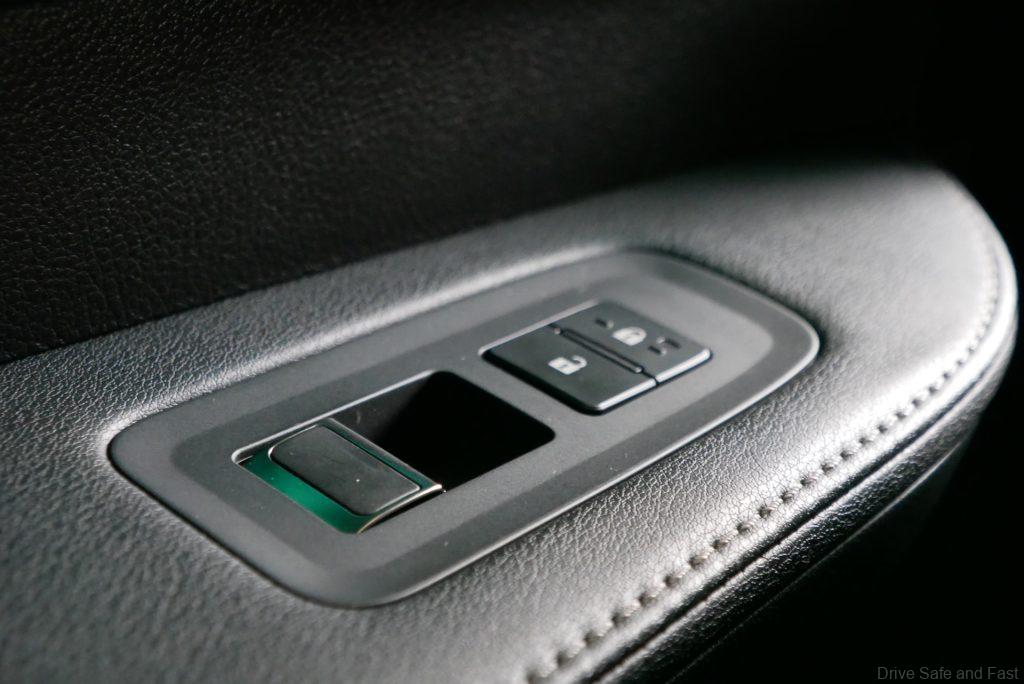
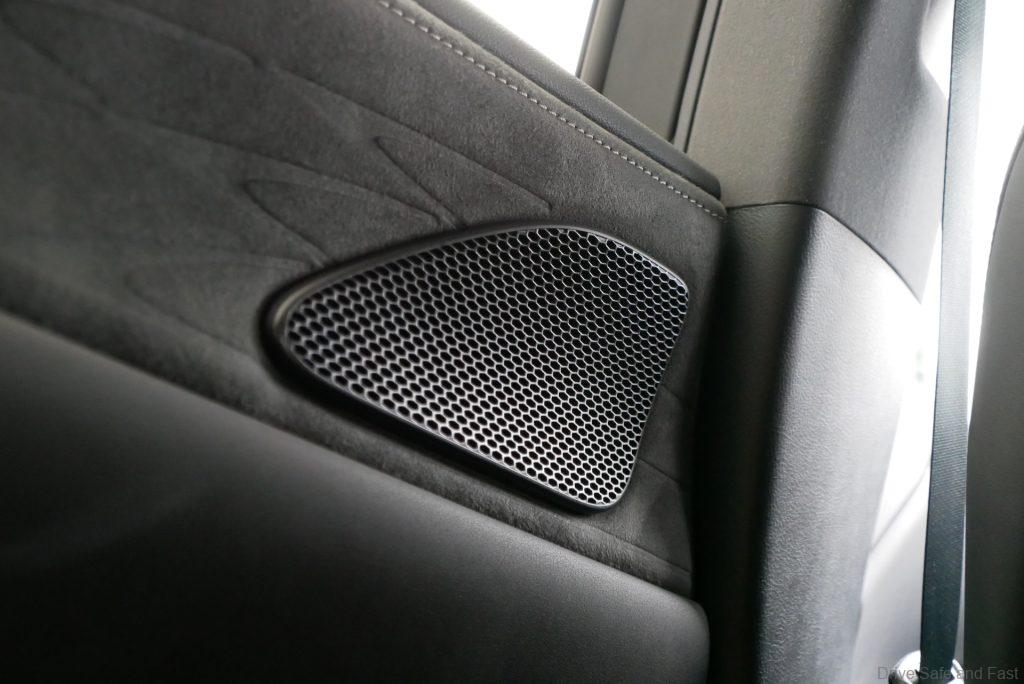
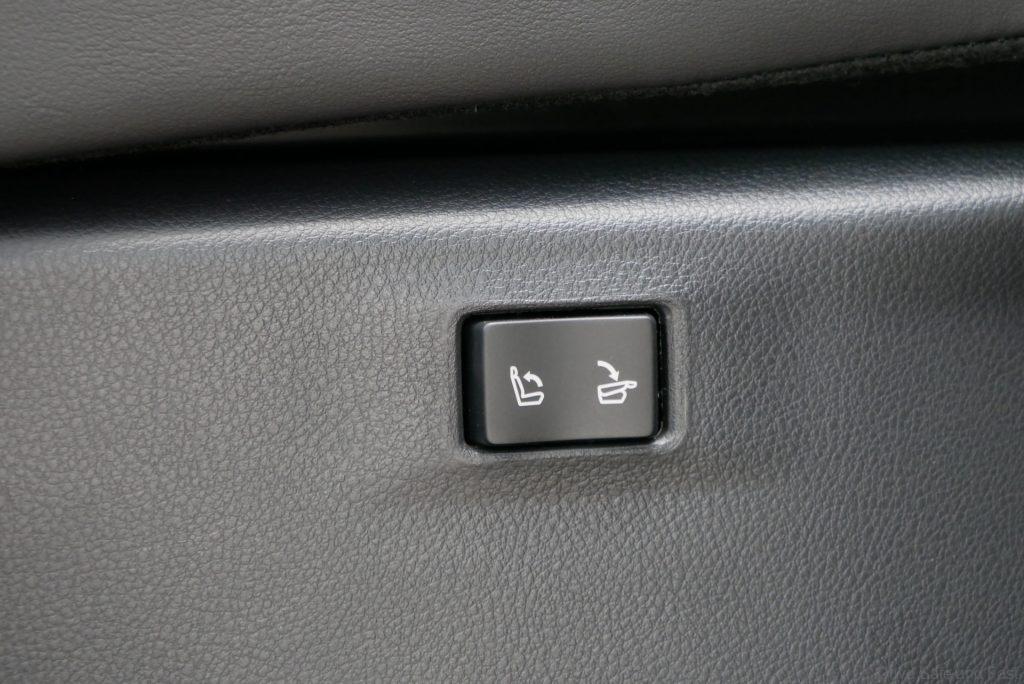
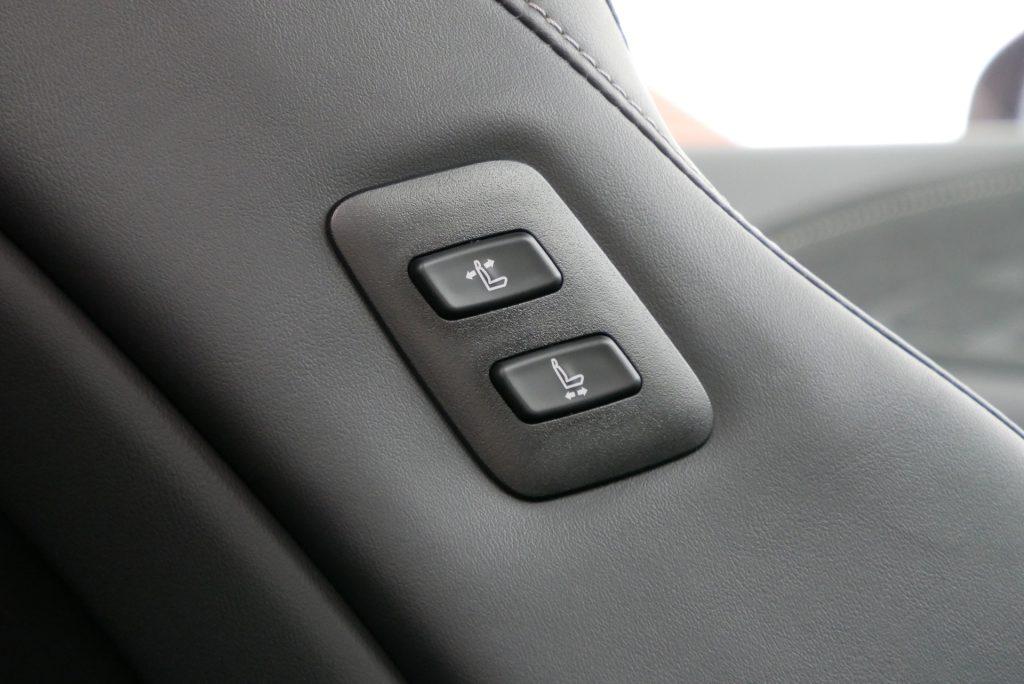
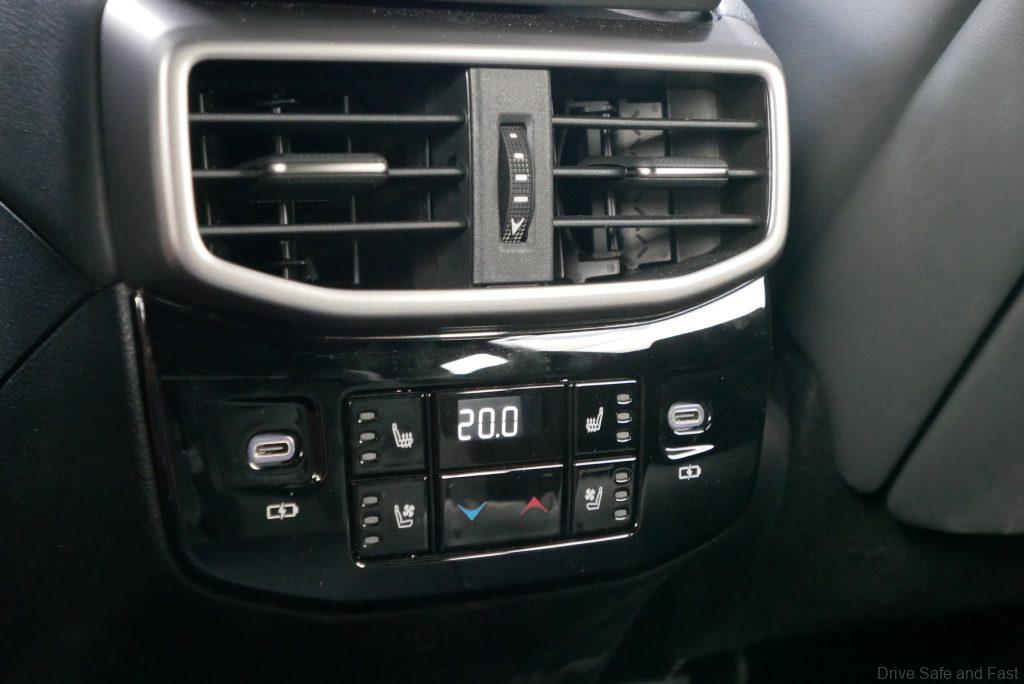
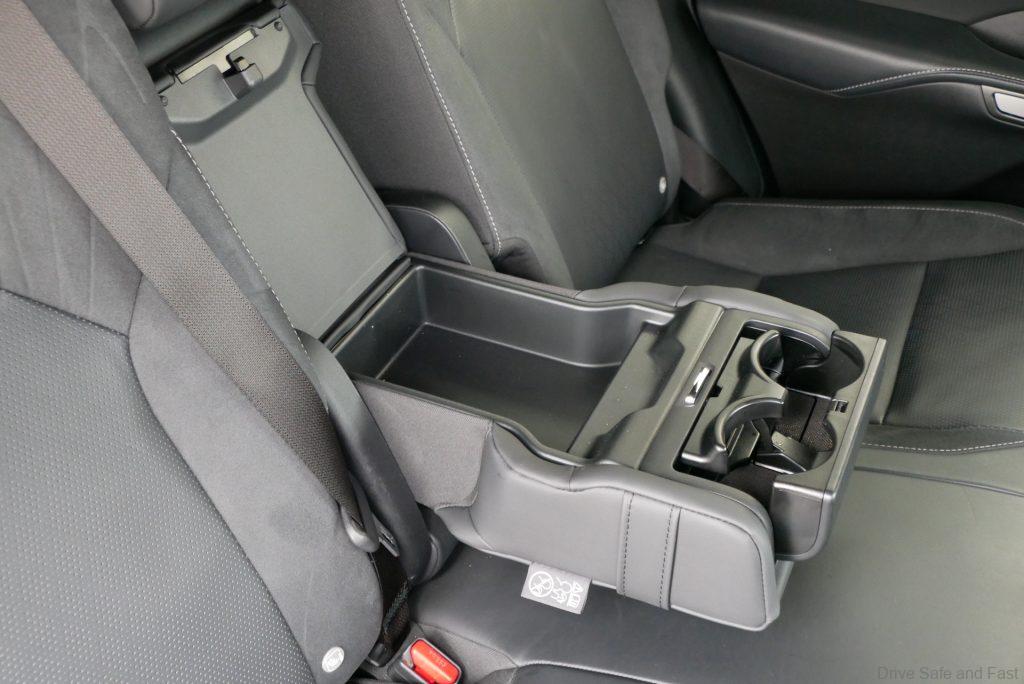
Beyond that you’ll find some controls to electronically flatten the rear seats, to move the front passenger seat out of the way, and you get a armrest with deployable cupholders and a hidden storage compartment. There are also rear air vents and digital controls, plus the rear seats are heated and ventilated too. Rear passengers have two USB-C ports to charge devices up with.
Value: CBU Appeal, Some Lost Niceties
The Lexus RX 350’s equipment list is extensive and includes many items we couldn’t quite fit in this review. The Lexus Safety System+ (LSS+) alone is rather extensive and you also get very well integration of the Blind Spot Monitor and Rear Traffic Cross Alert, which stops the e-latch system from opening the door if a fast car is approaching. However there are some notable omissions this time around like the lack of a Mark Levinson speaker system and F Sport trim. A panoramic sunroof is usually also available from many European rivals at this price point.
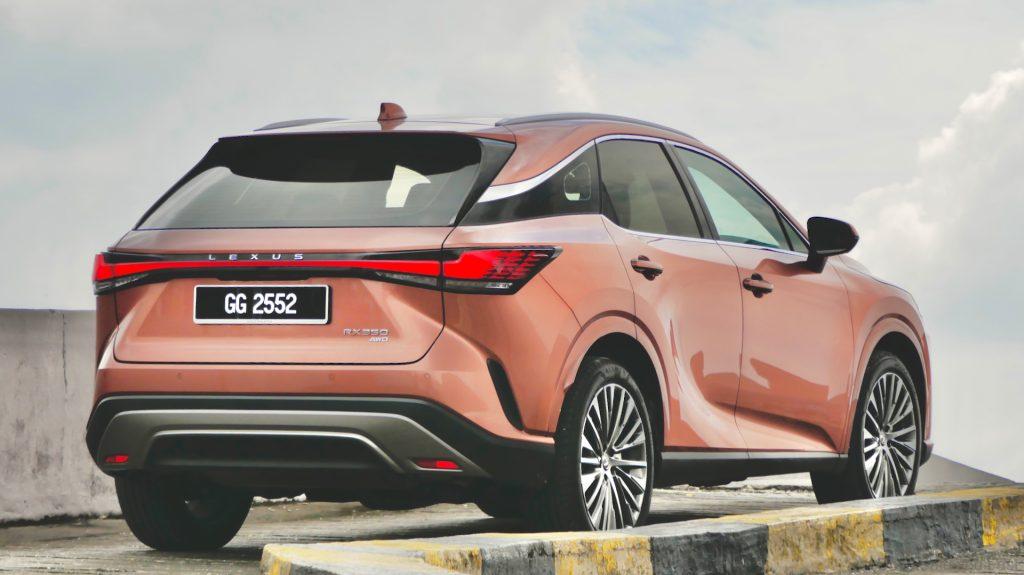
All that in mind, I think Lexus Malaysia did a great job with pricing this at just RM468,888. This is a increase from the previous car’s RM439,888 price tag but it’s a much more sophisticated, dynamic and powerful car plus it actually looks like a car worth twice as much from some angles. I think the biggest part of its appeal is that it is a fully imported luxury vehicle from Japan. None of its rivals are offered in CBU form and when you’re spending this much money nowadays it’s nice to know you’re getting something put together in a world class facility with world class quality control. That alone can be worth any pricing incentives attached to CKD models.
Another reason why the Lexus RX is appealing despite being nearly half a million Ringgit is down to its powertrain. This is a Toyota Dynamic Force engine with no traction battery to worry about and no complicated plug-in system. All of its rivals are electrified to a certain degree and Lexus is giving Malaysian customers possibly the last ever option for an ICE-powered luxury SUV.
2023 Lexus RX 350 Specifications
Engine: Inline-4, 16-Valve, DOHC, Turbocharged Petrol
Capacity: 1,998cc
Gearbox: 8-speed Conventional Automatic with AWD
Max power: 275hp @ 6000rpm
Max torque: 430Nm @ 1700-3600rpm
0-100 km/h: 7.6 seconds
Price: RM468,888

